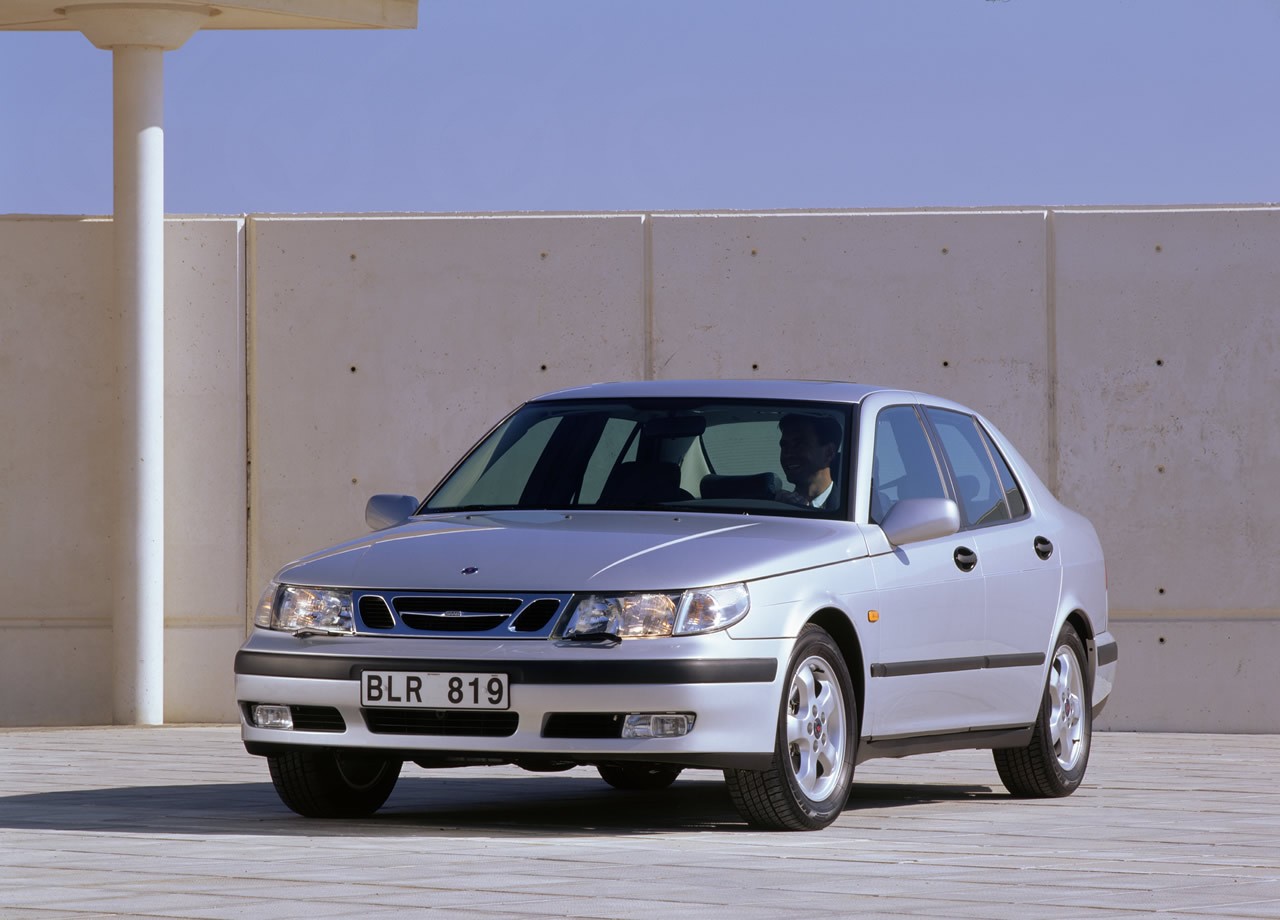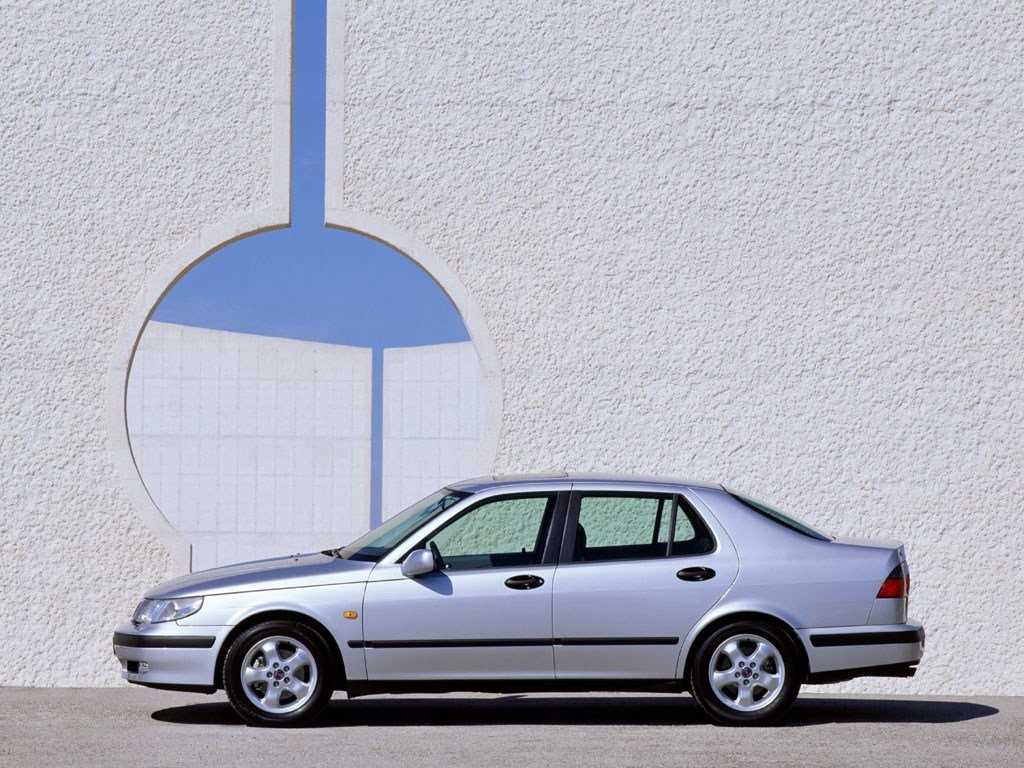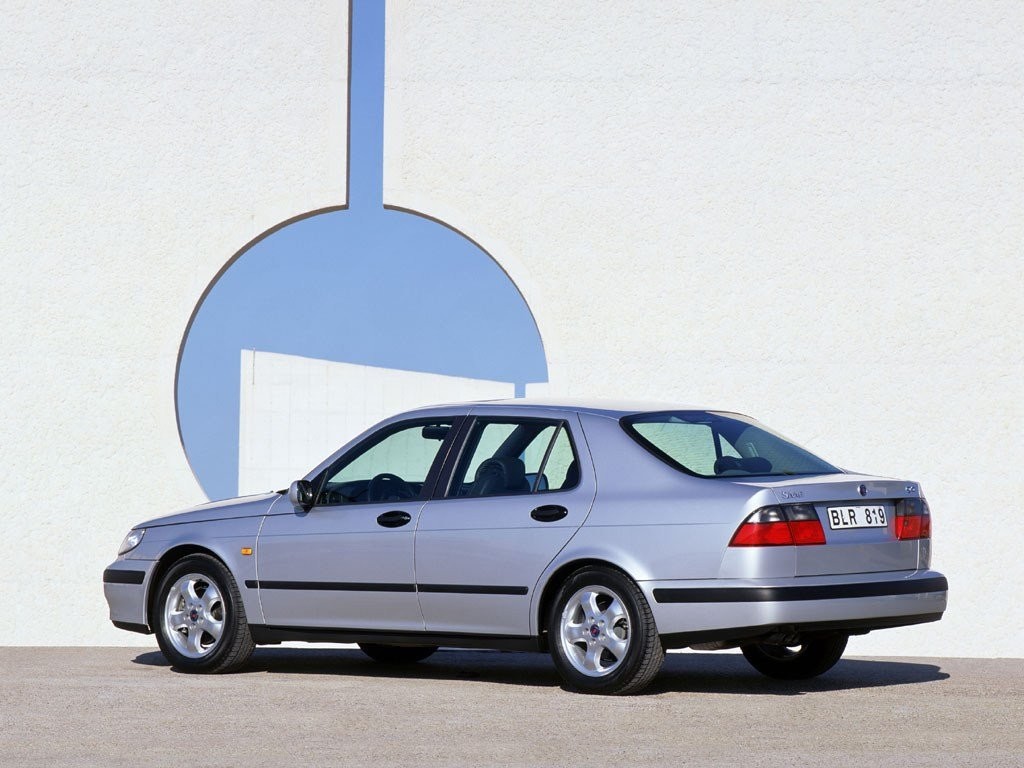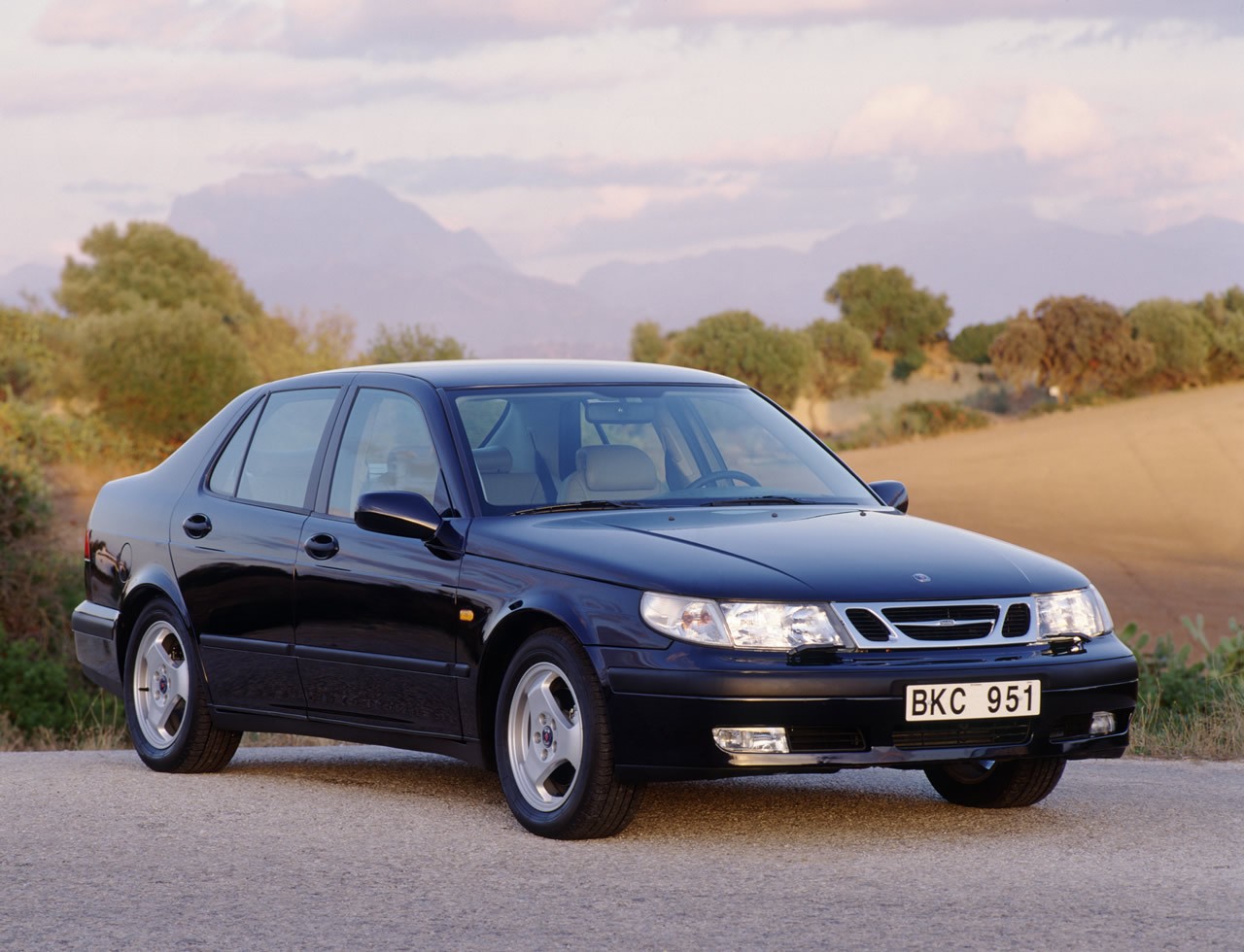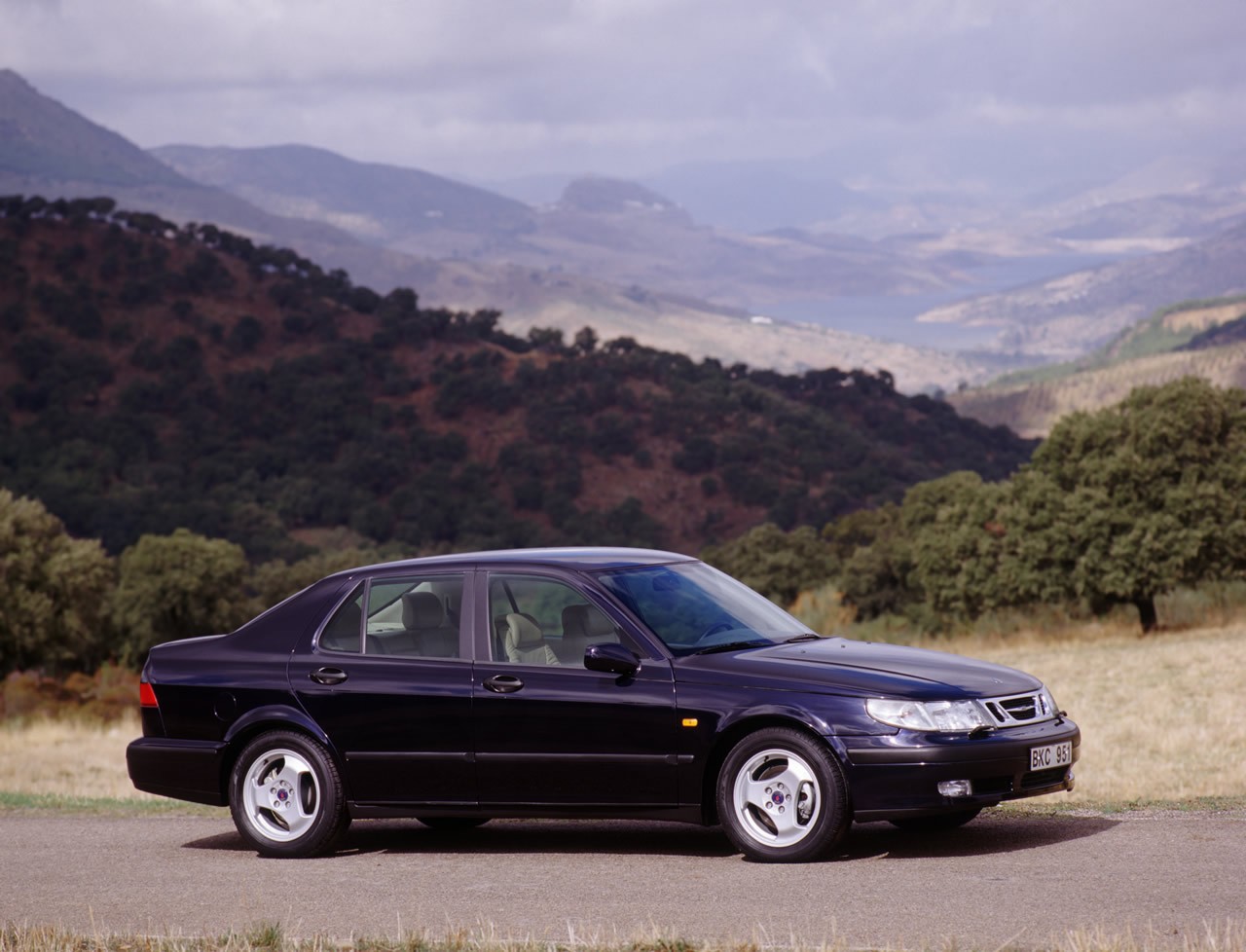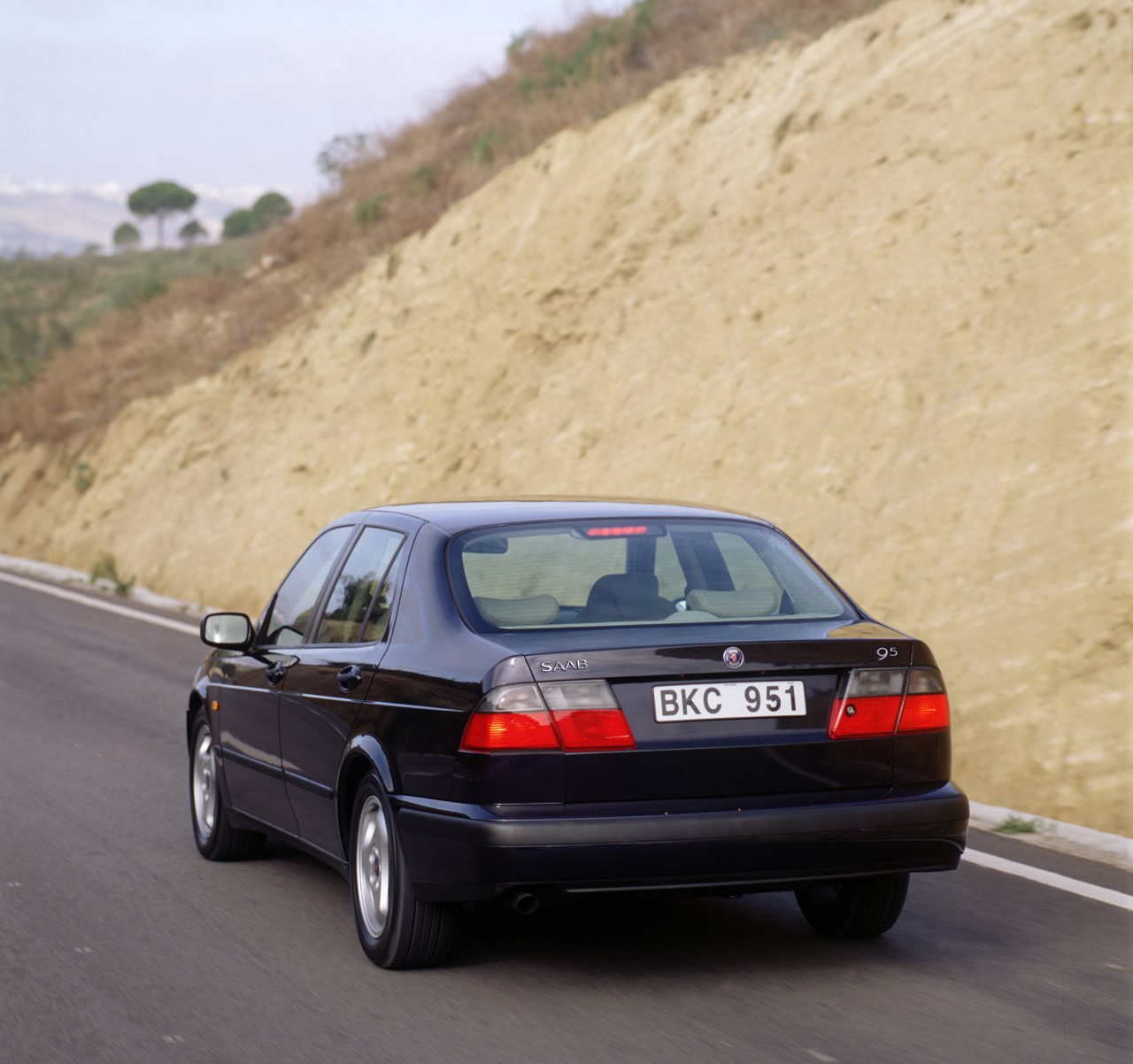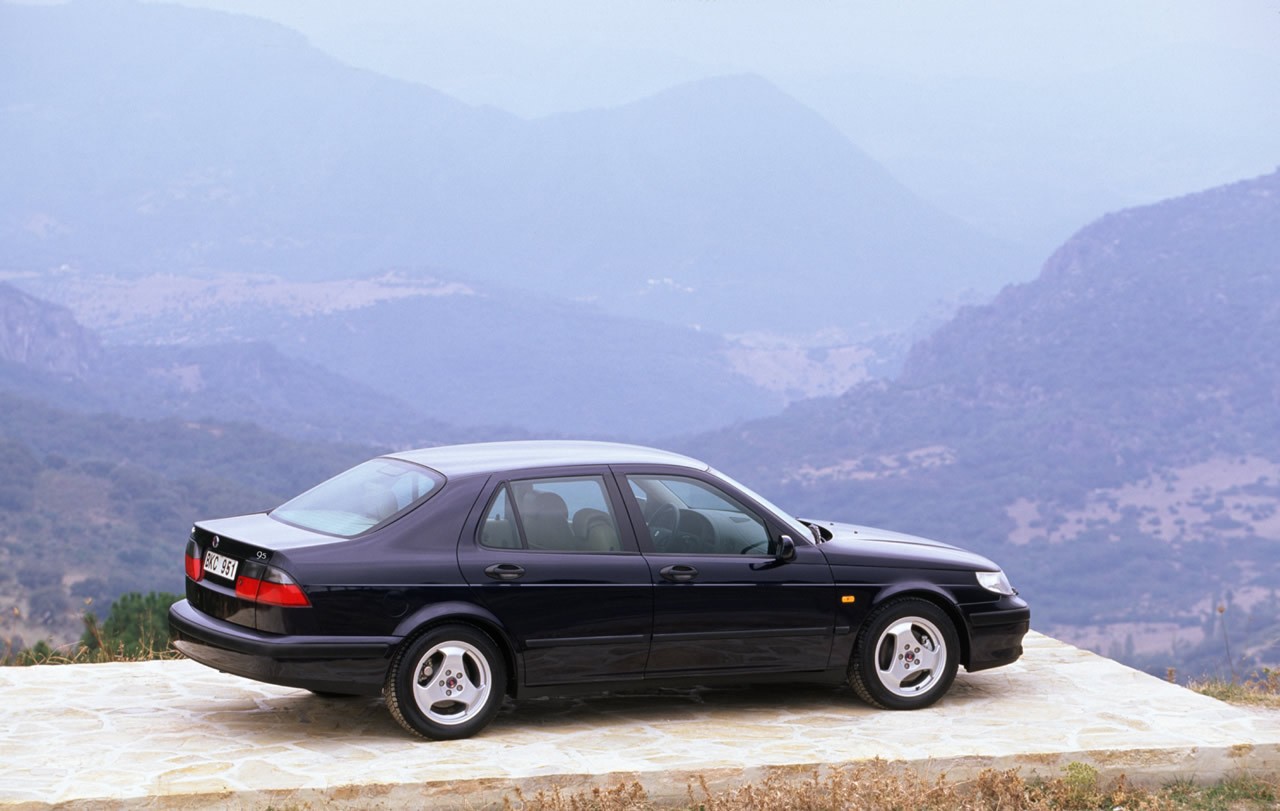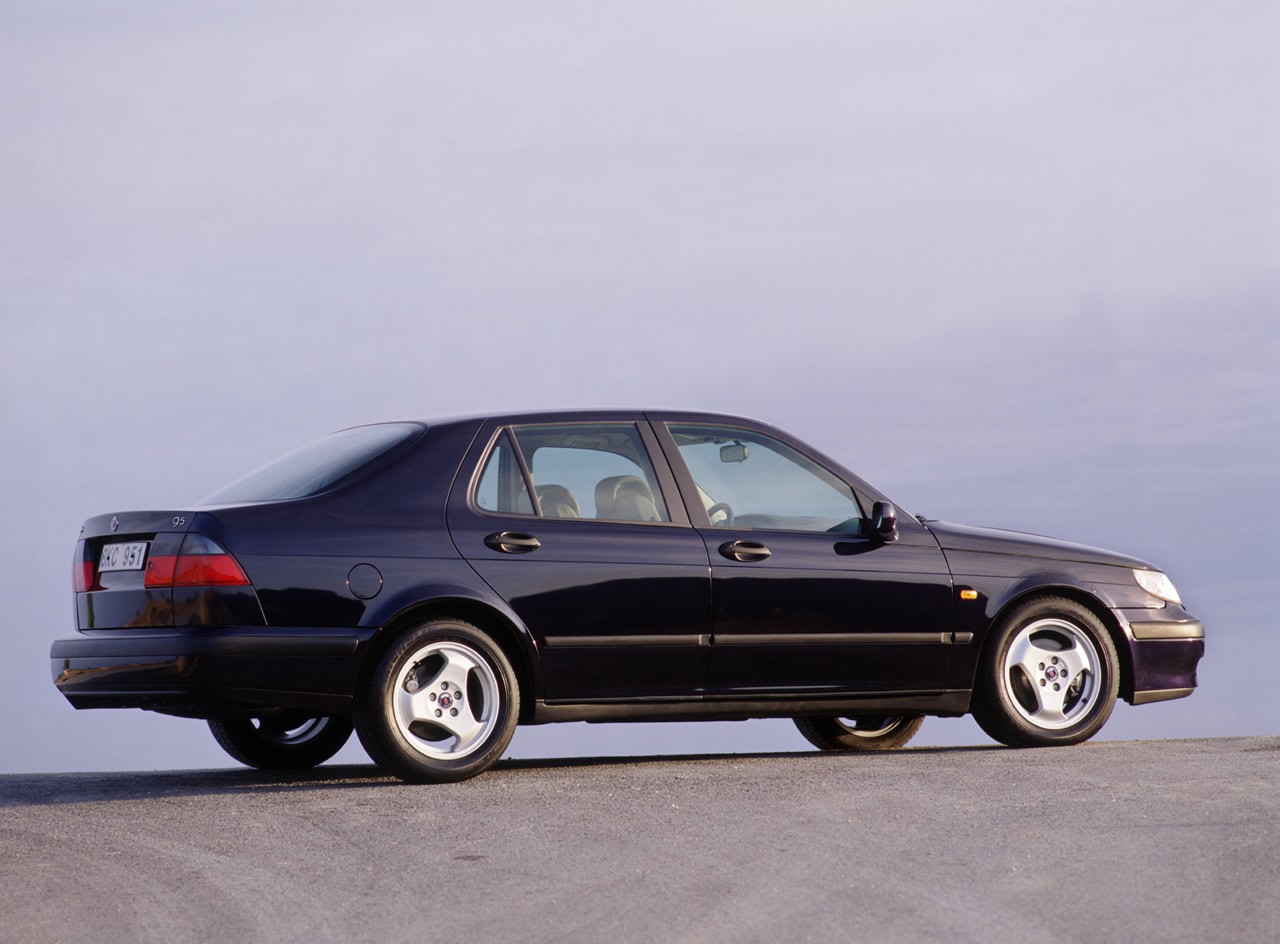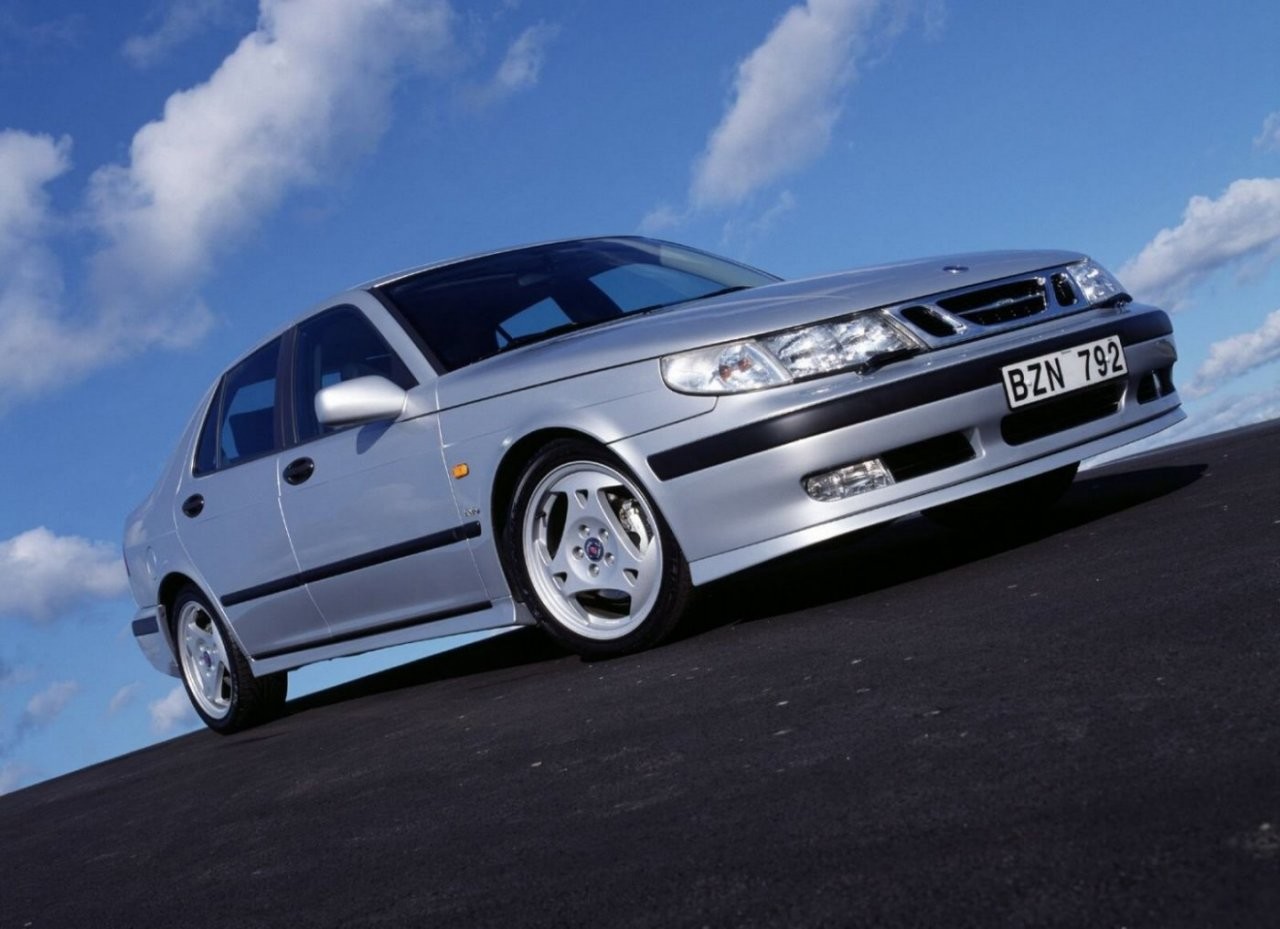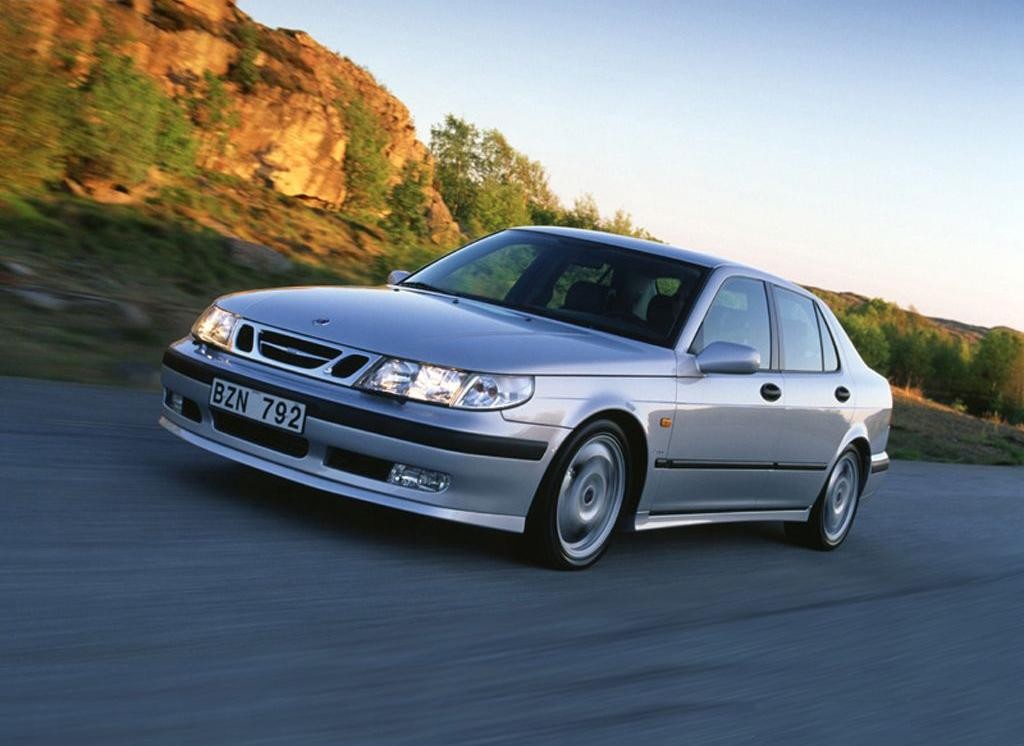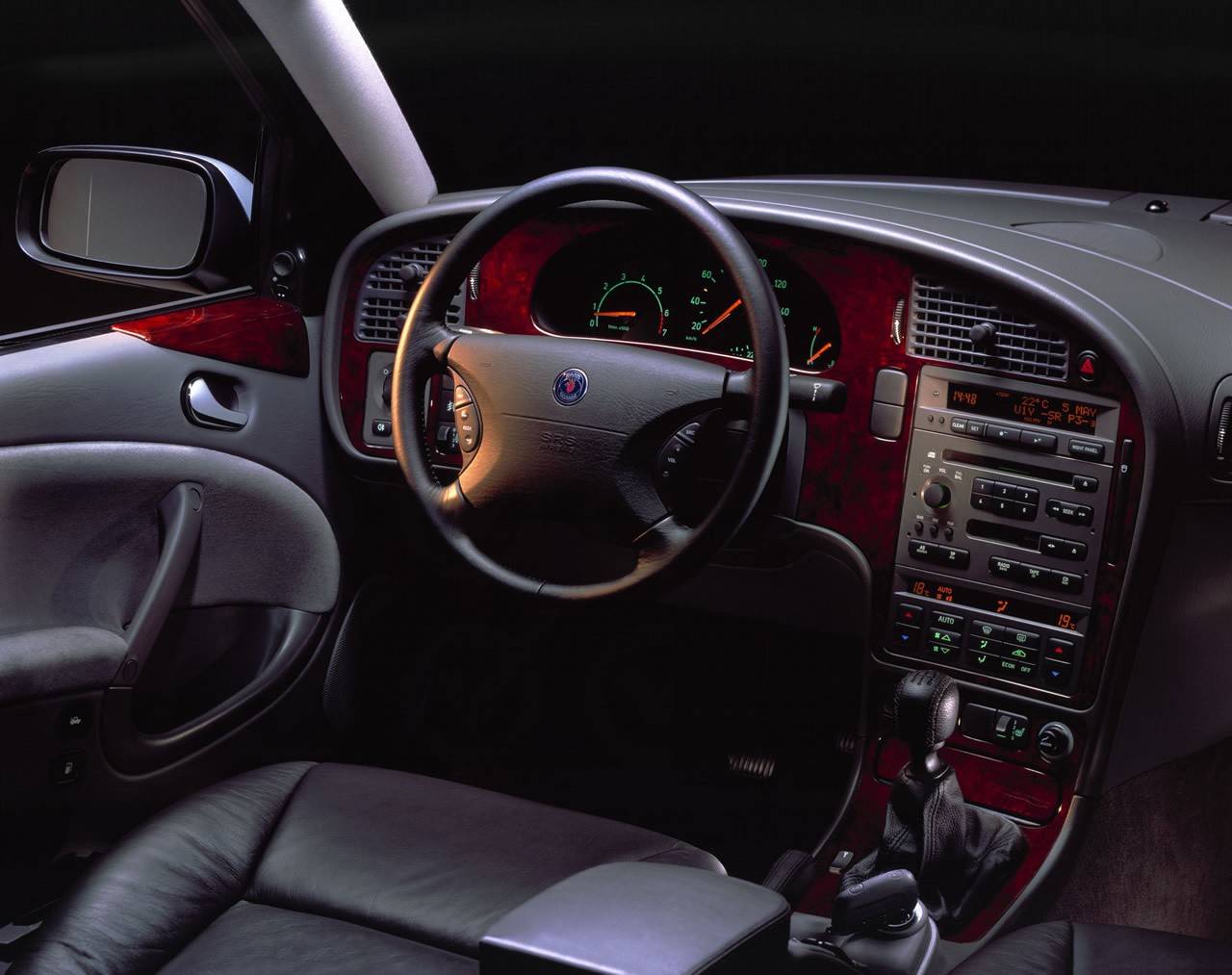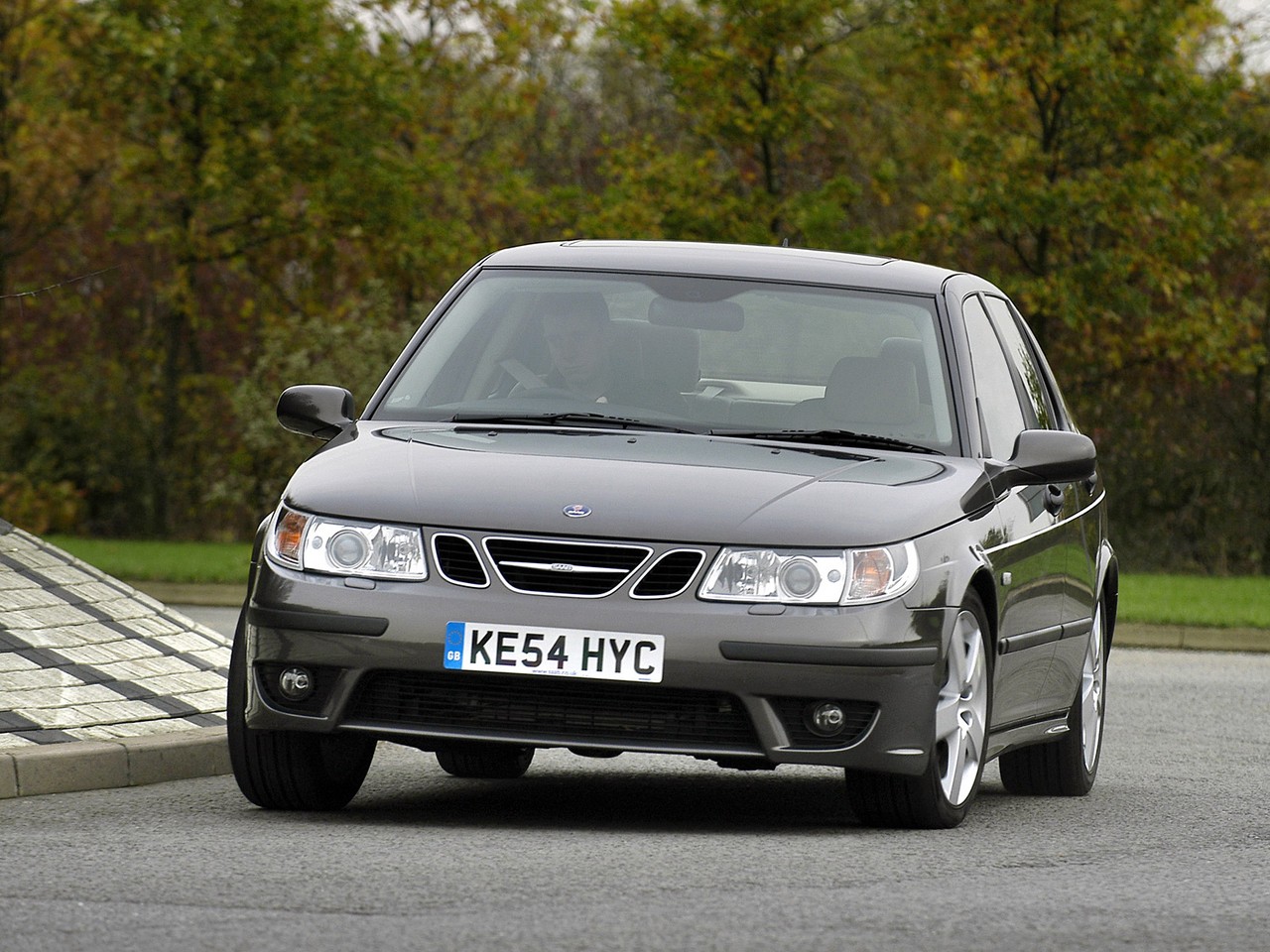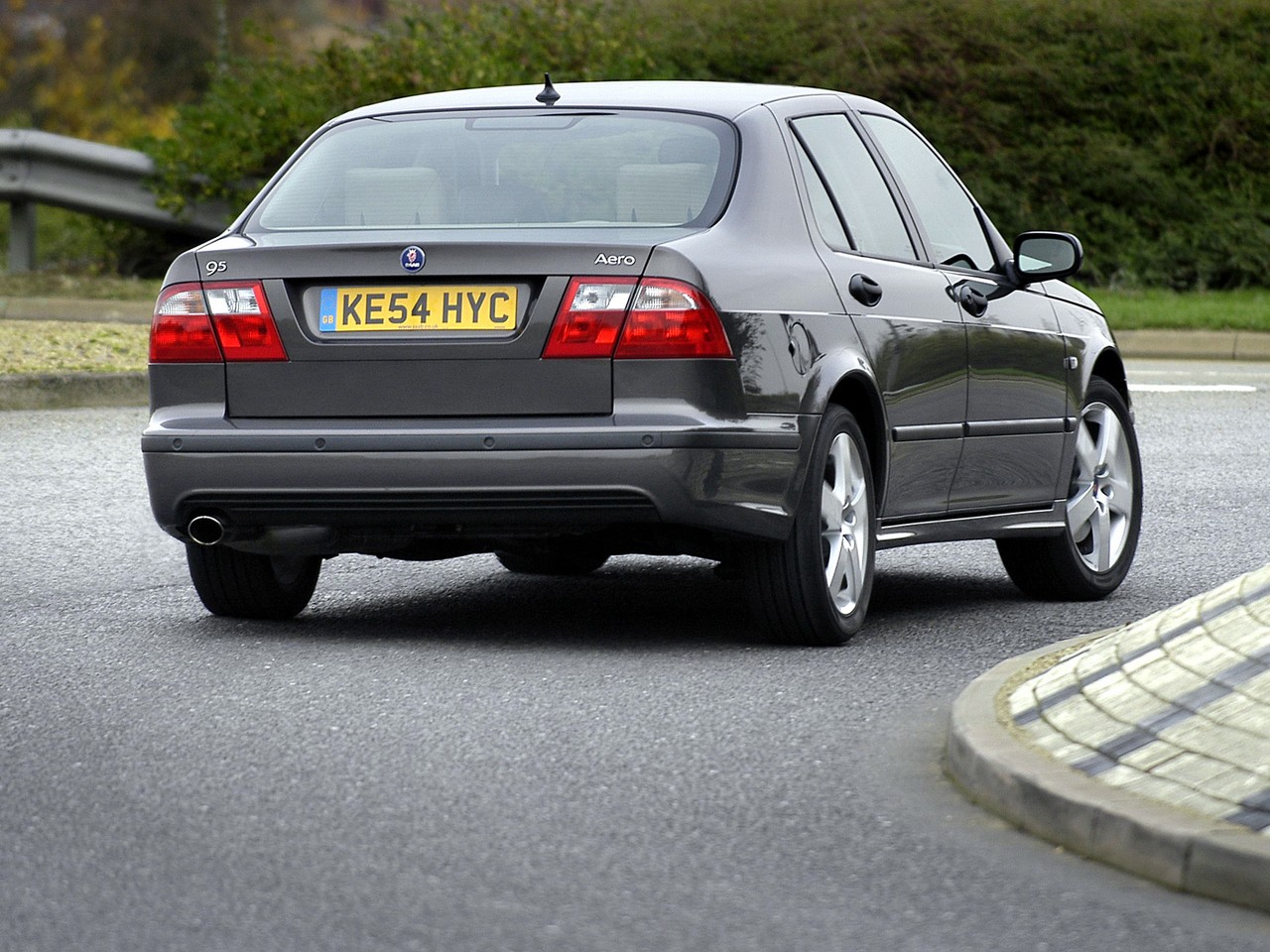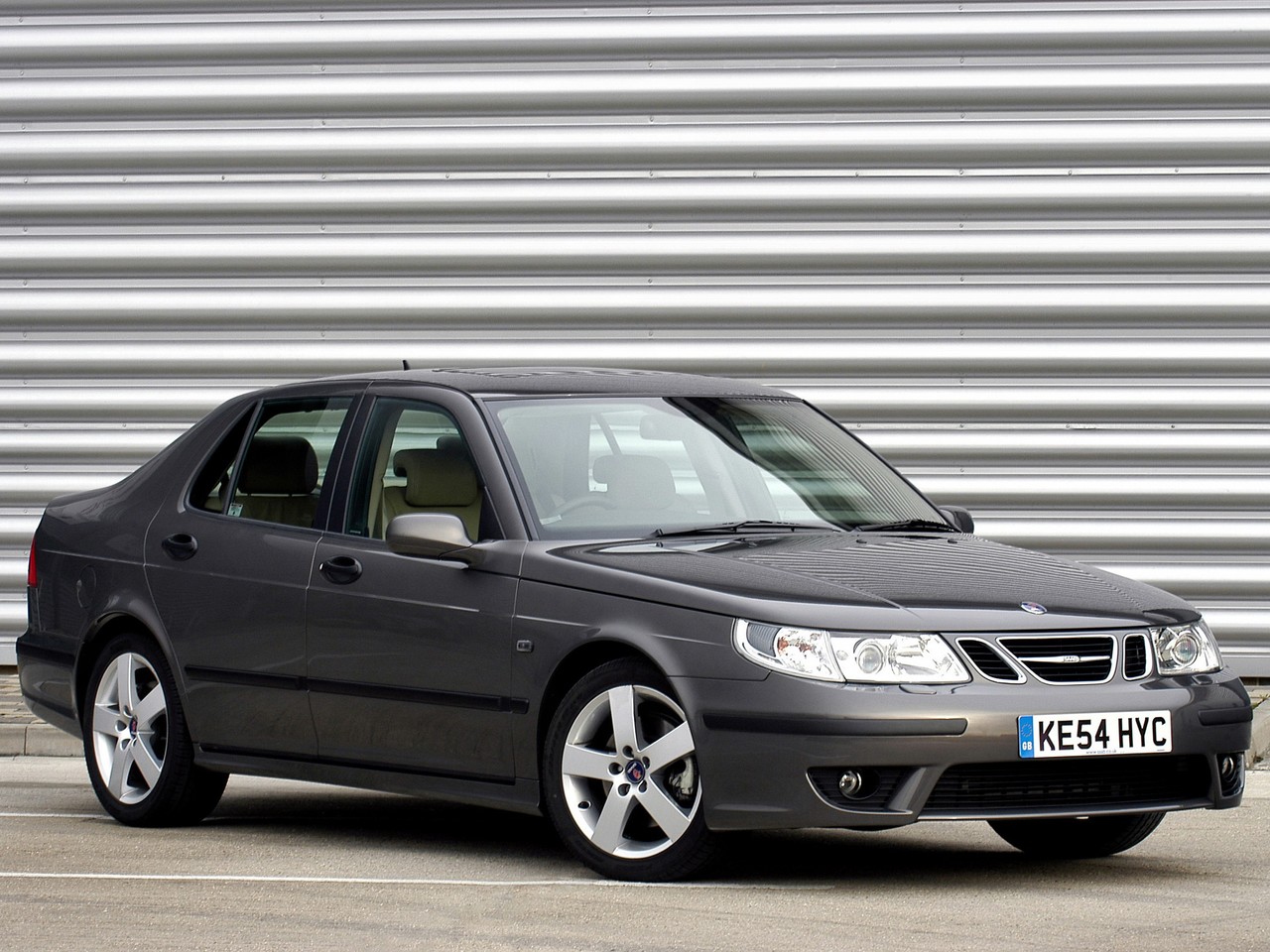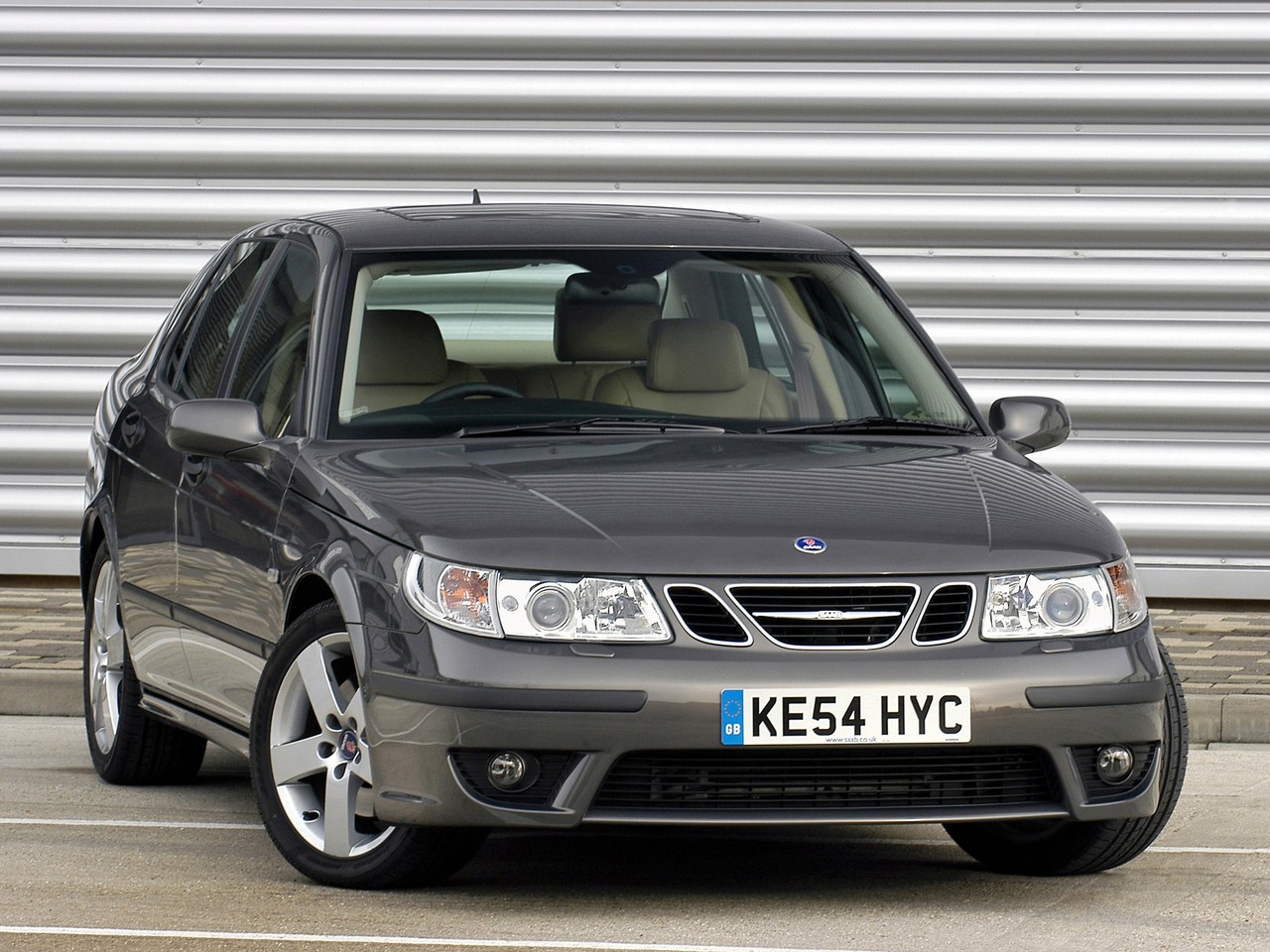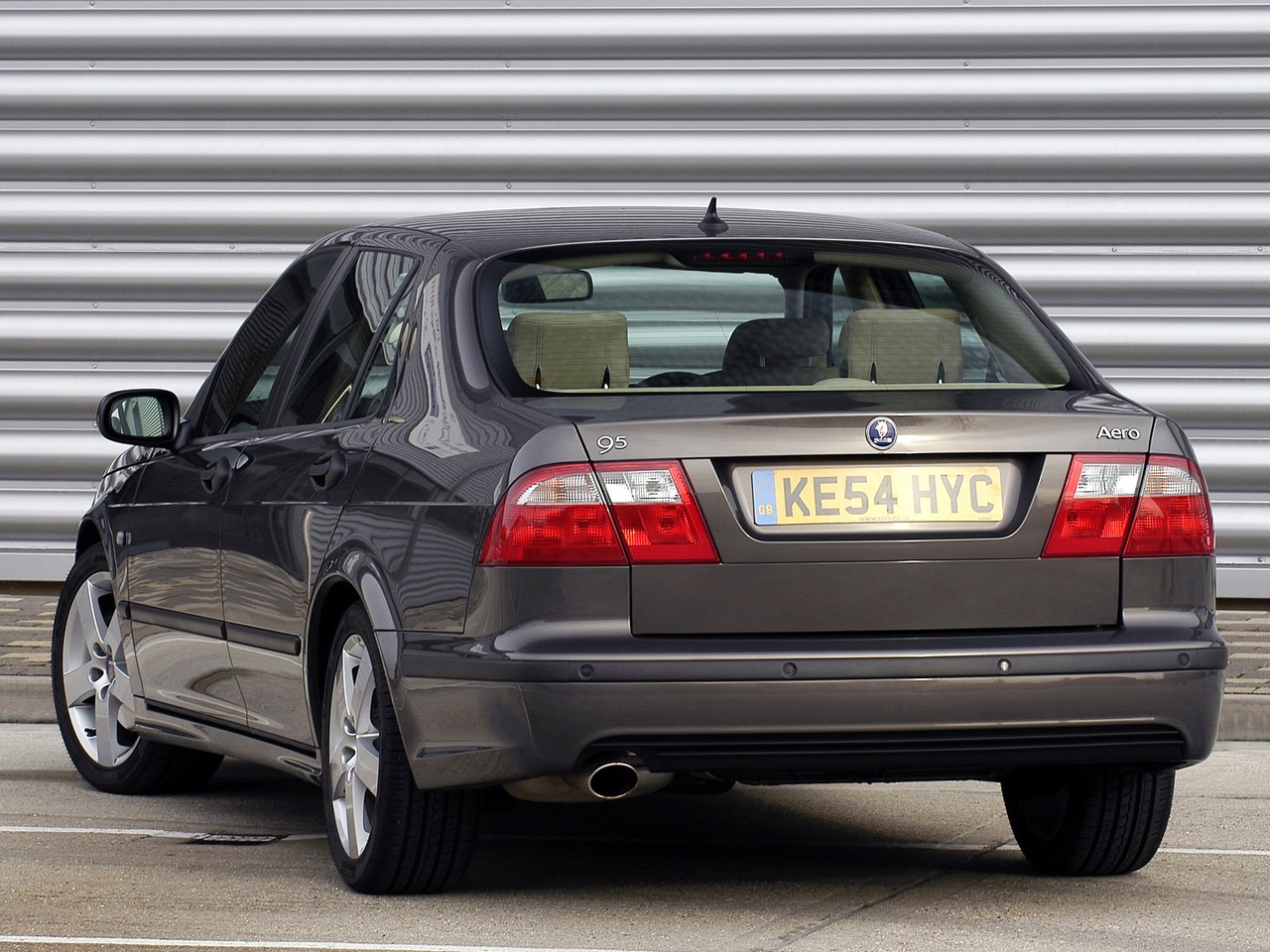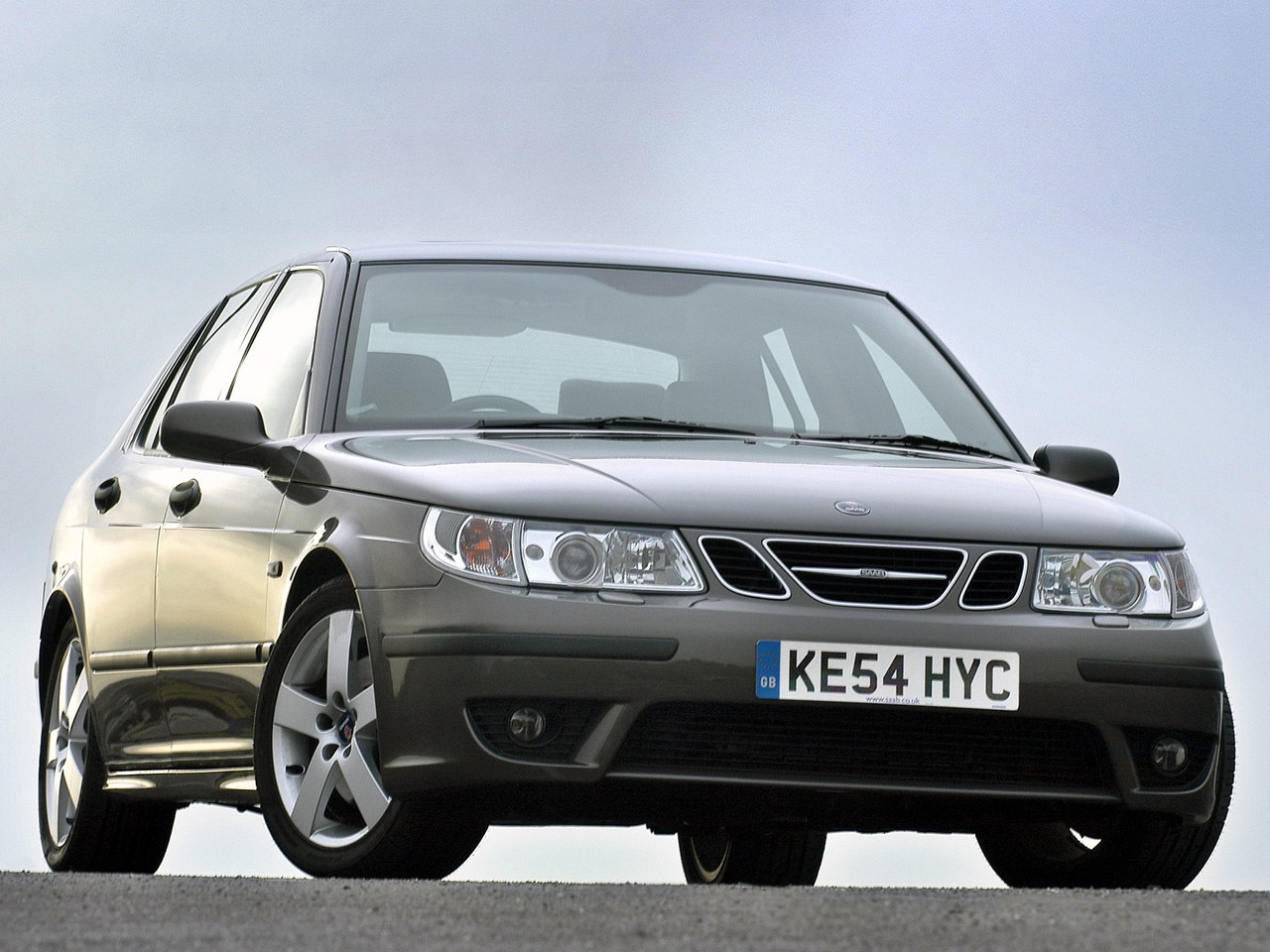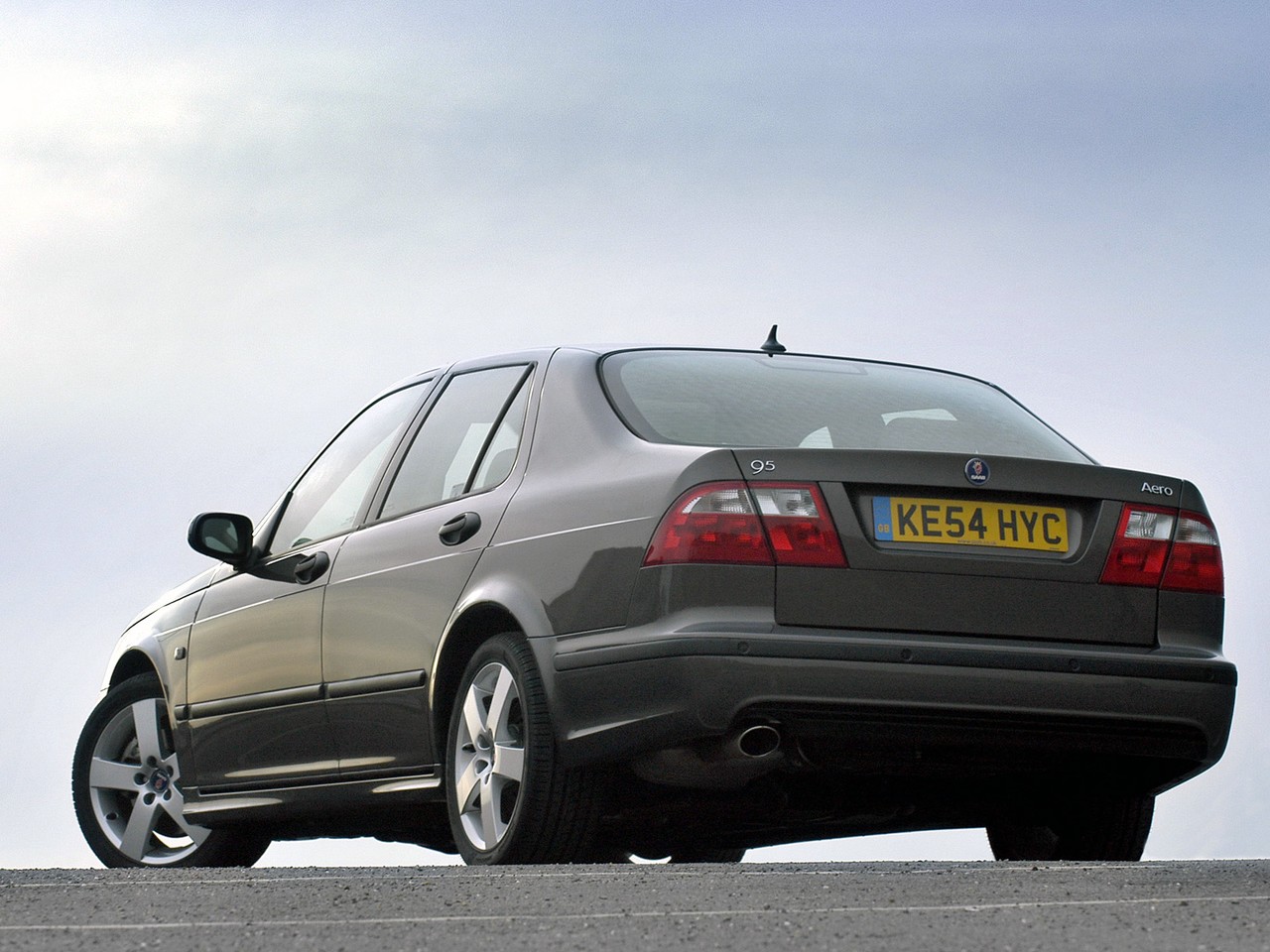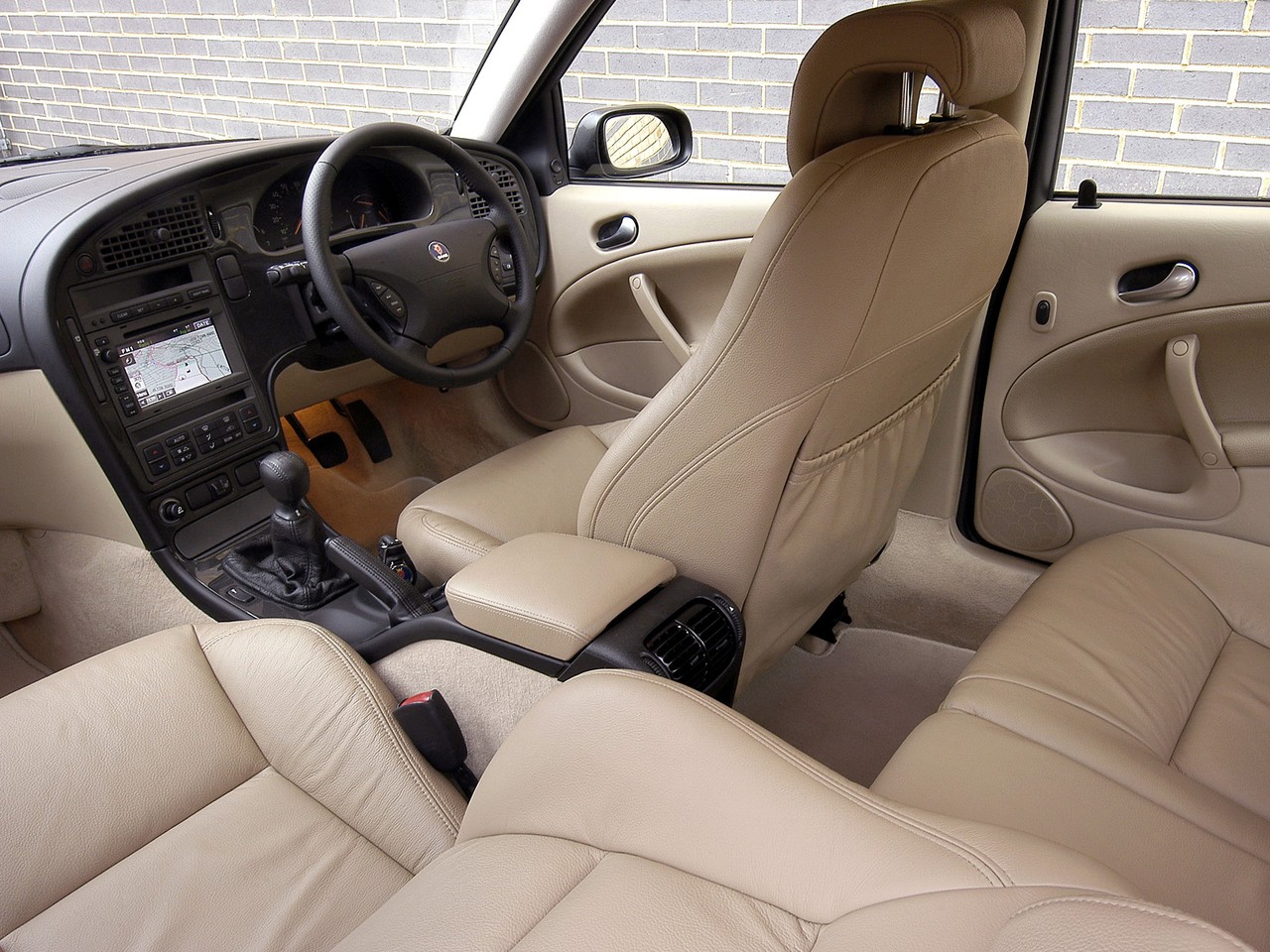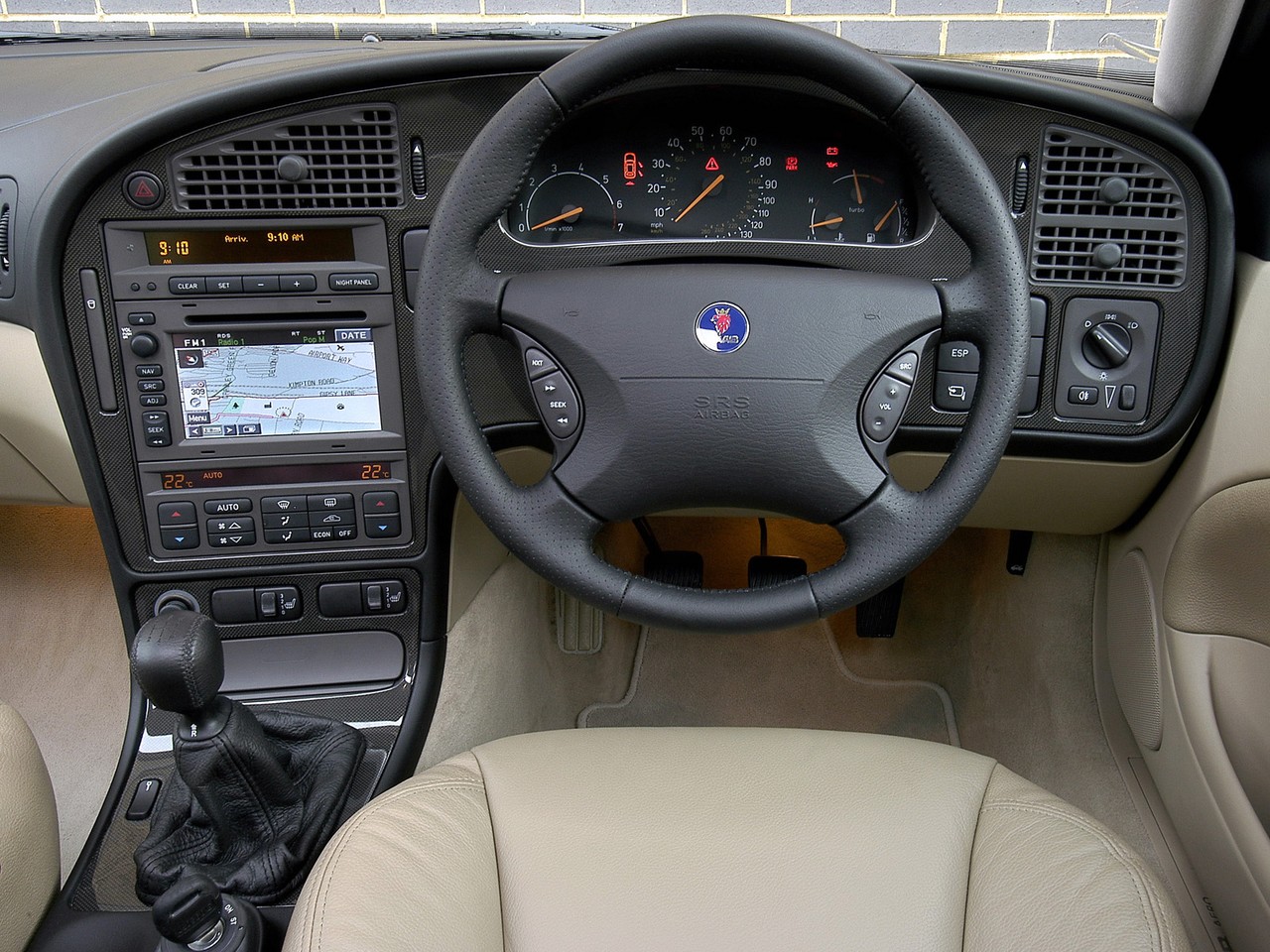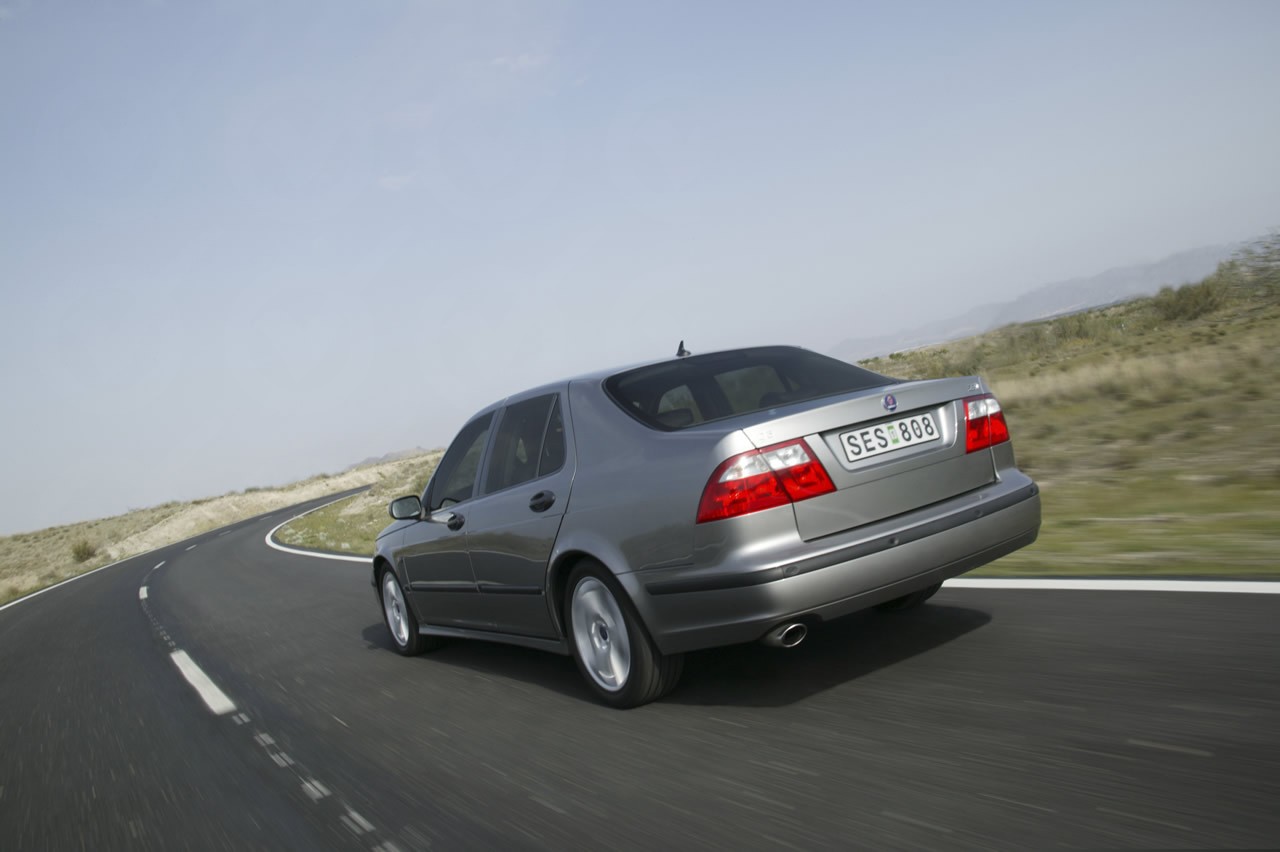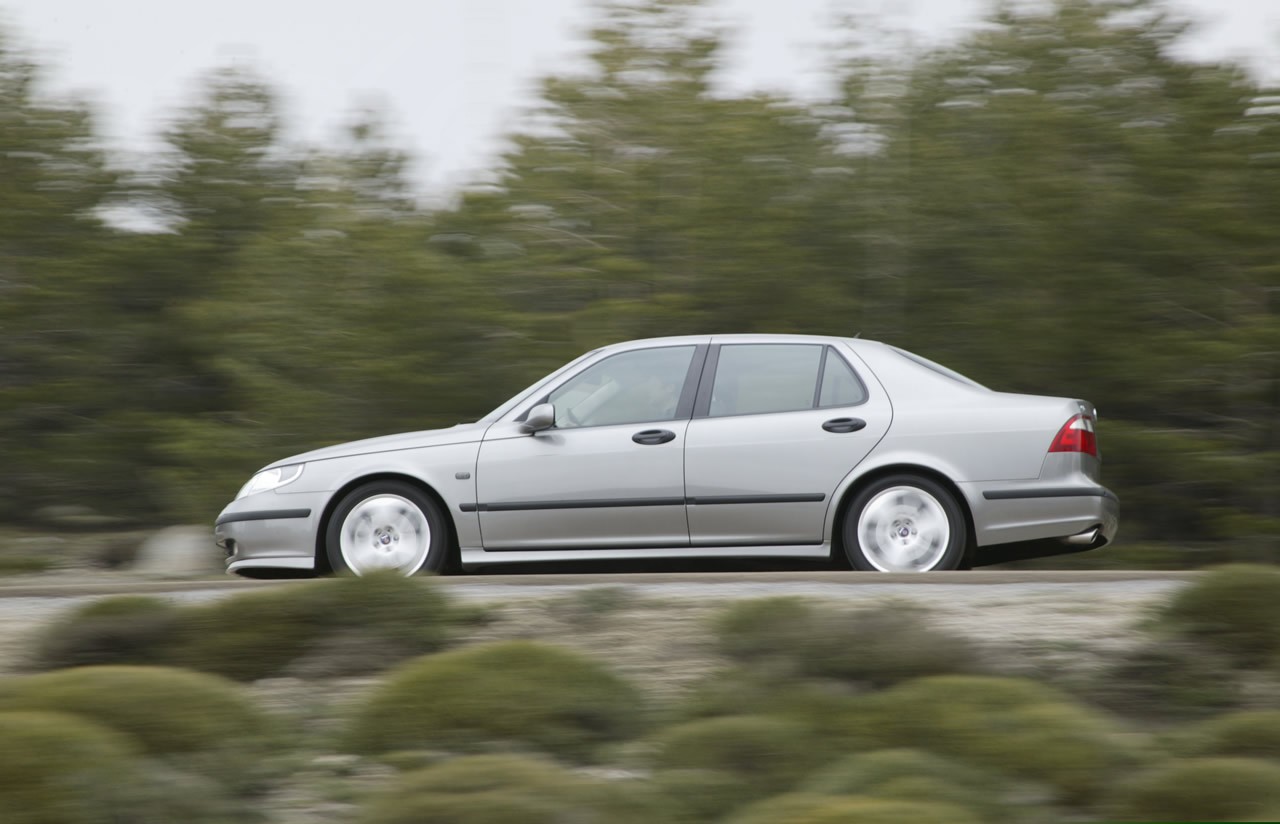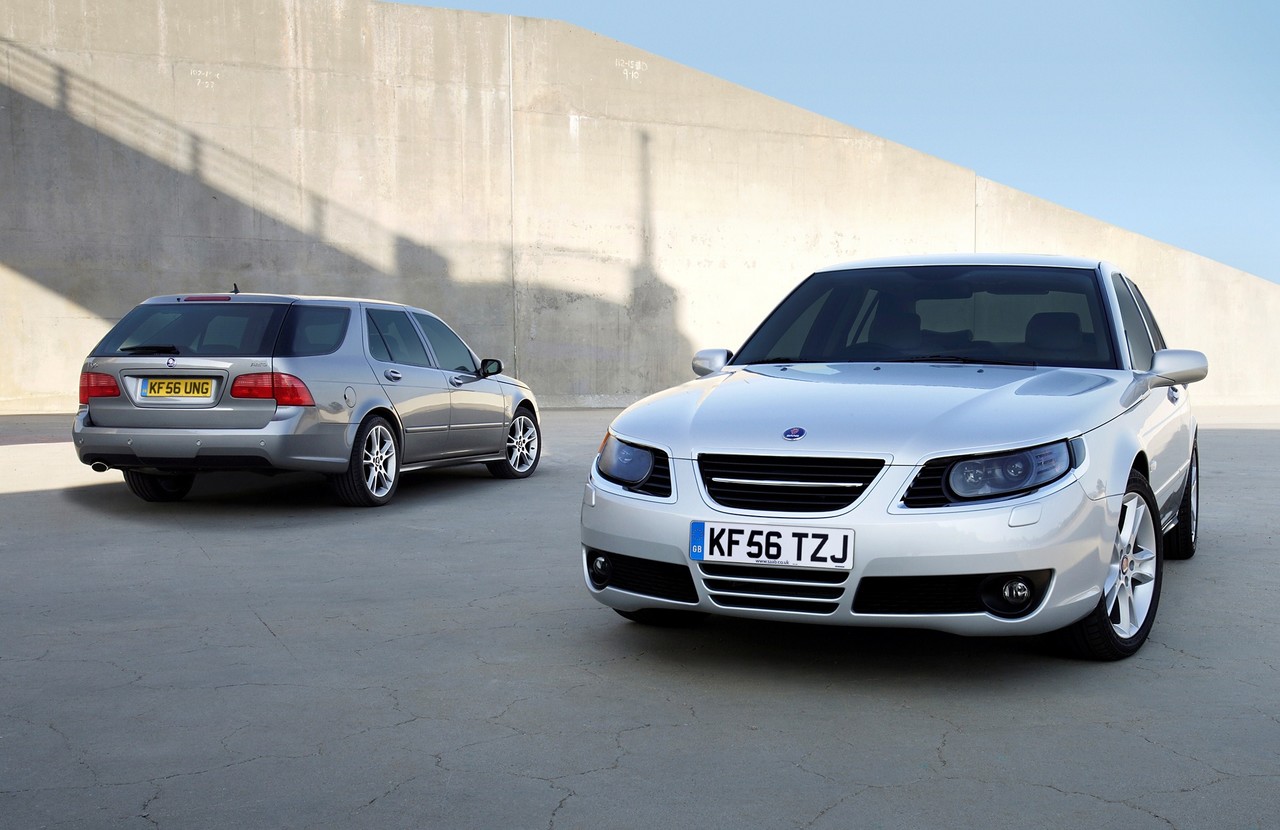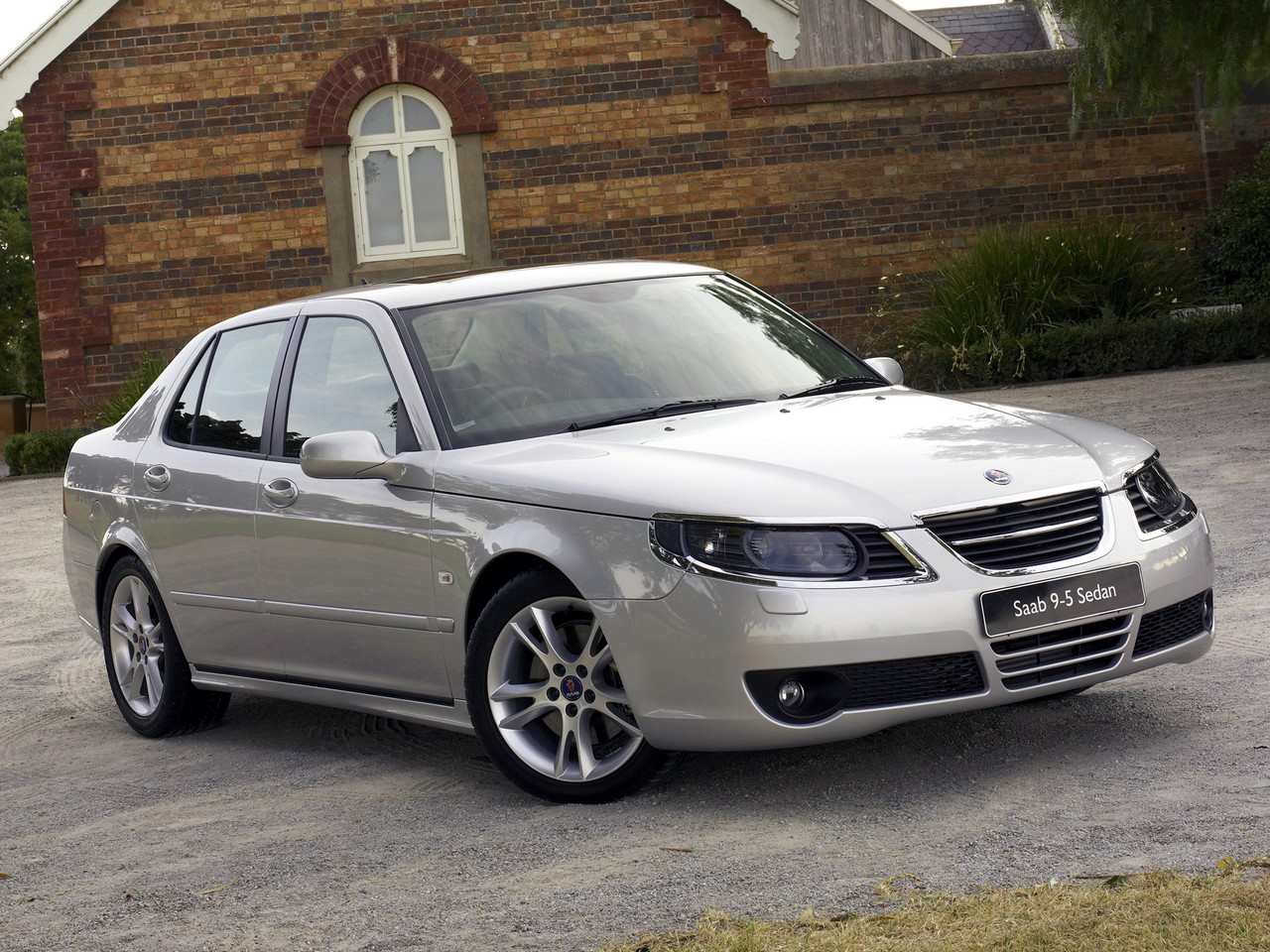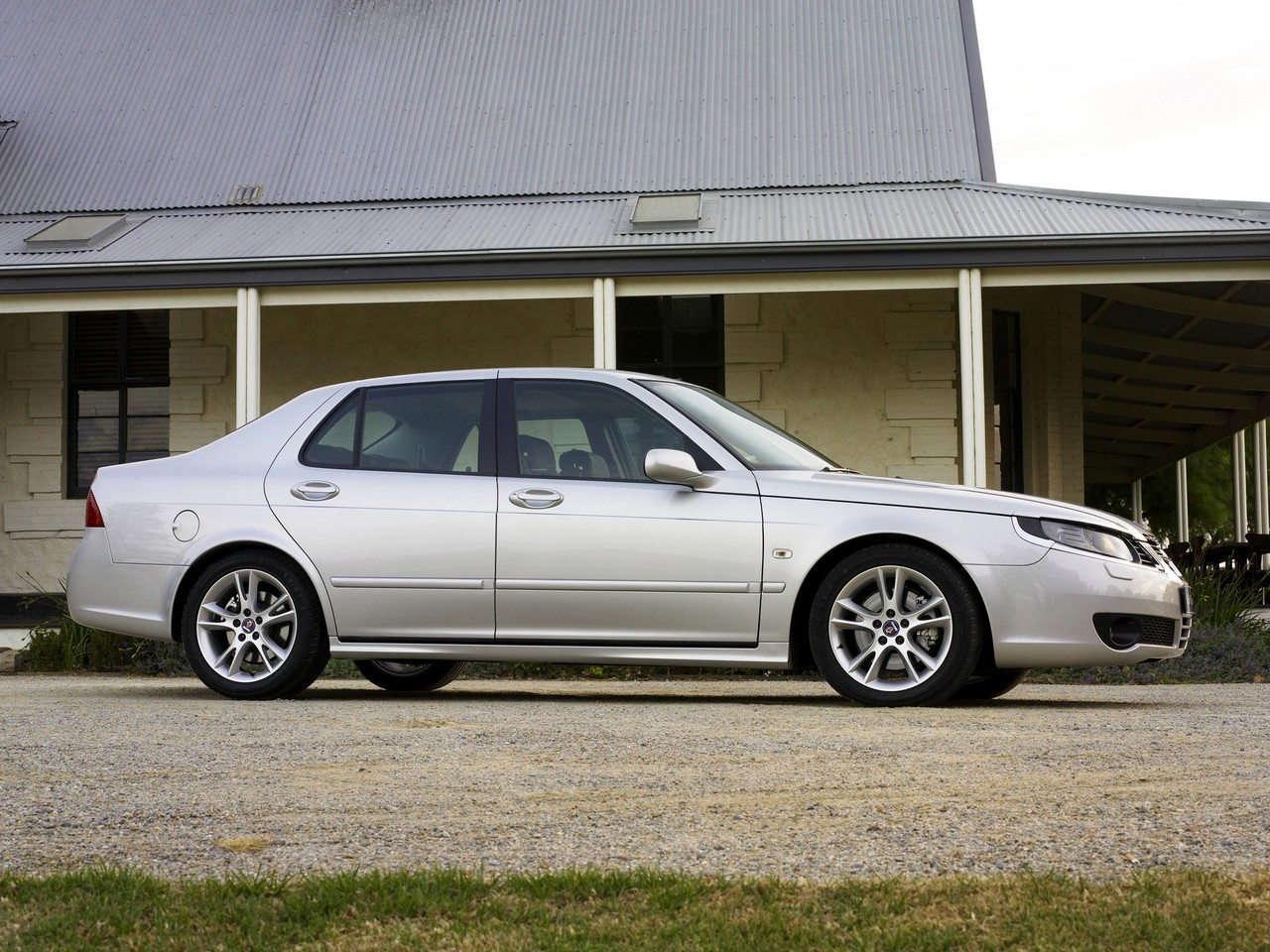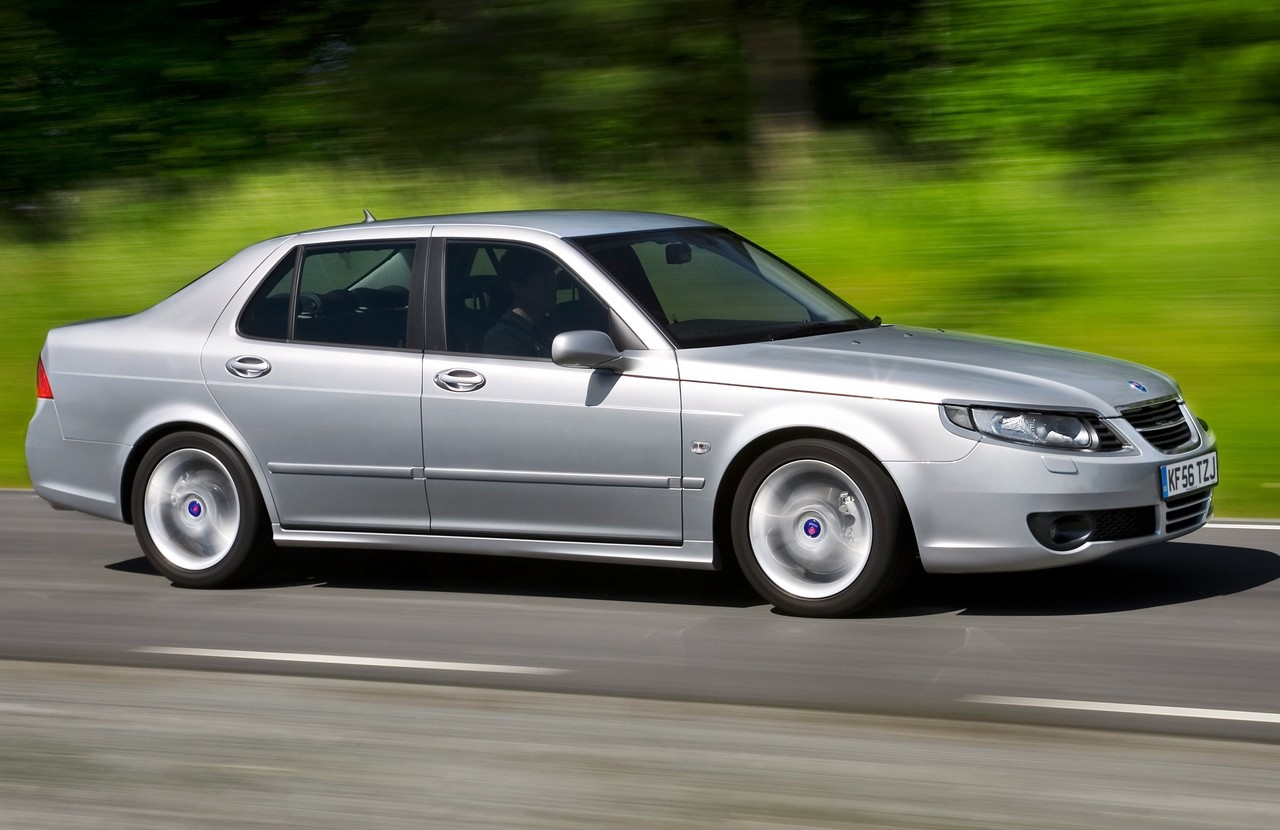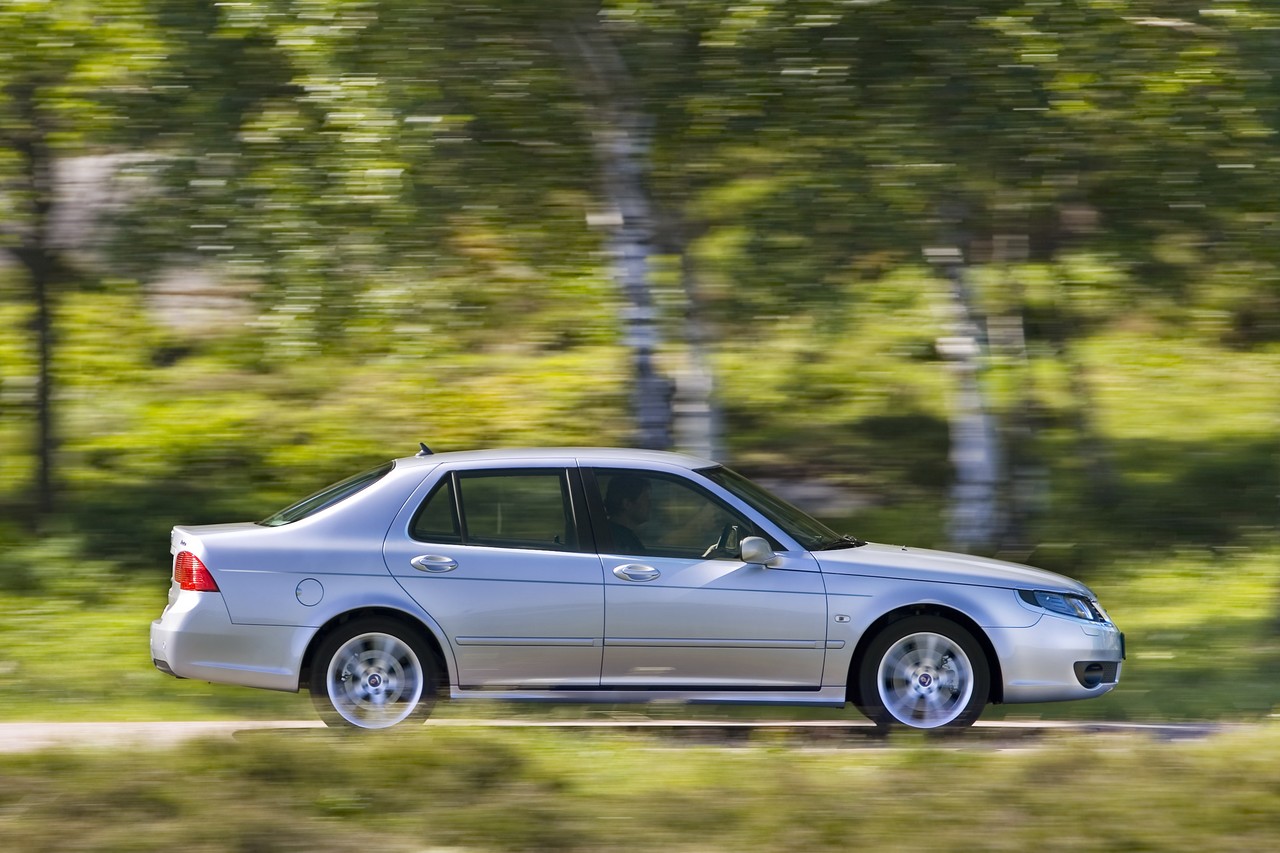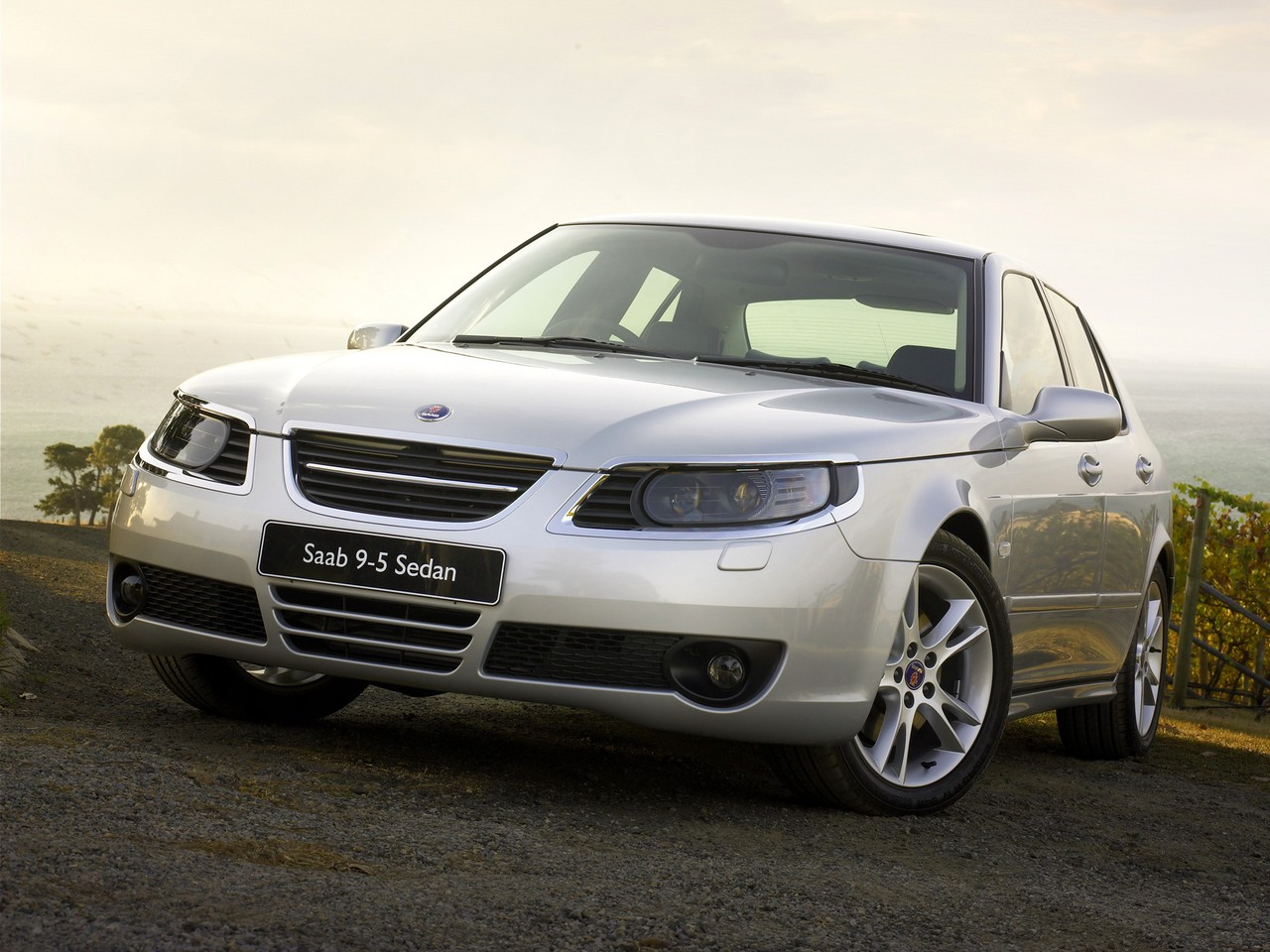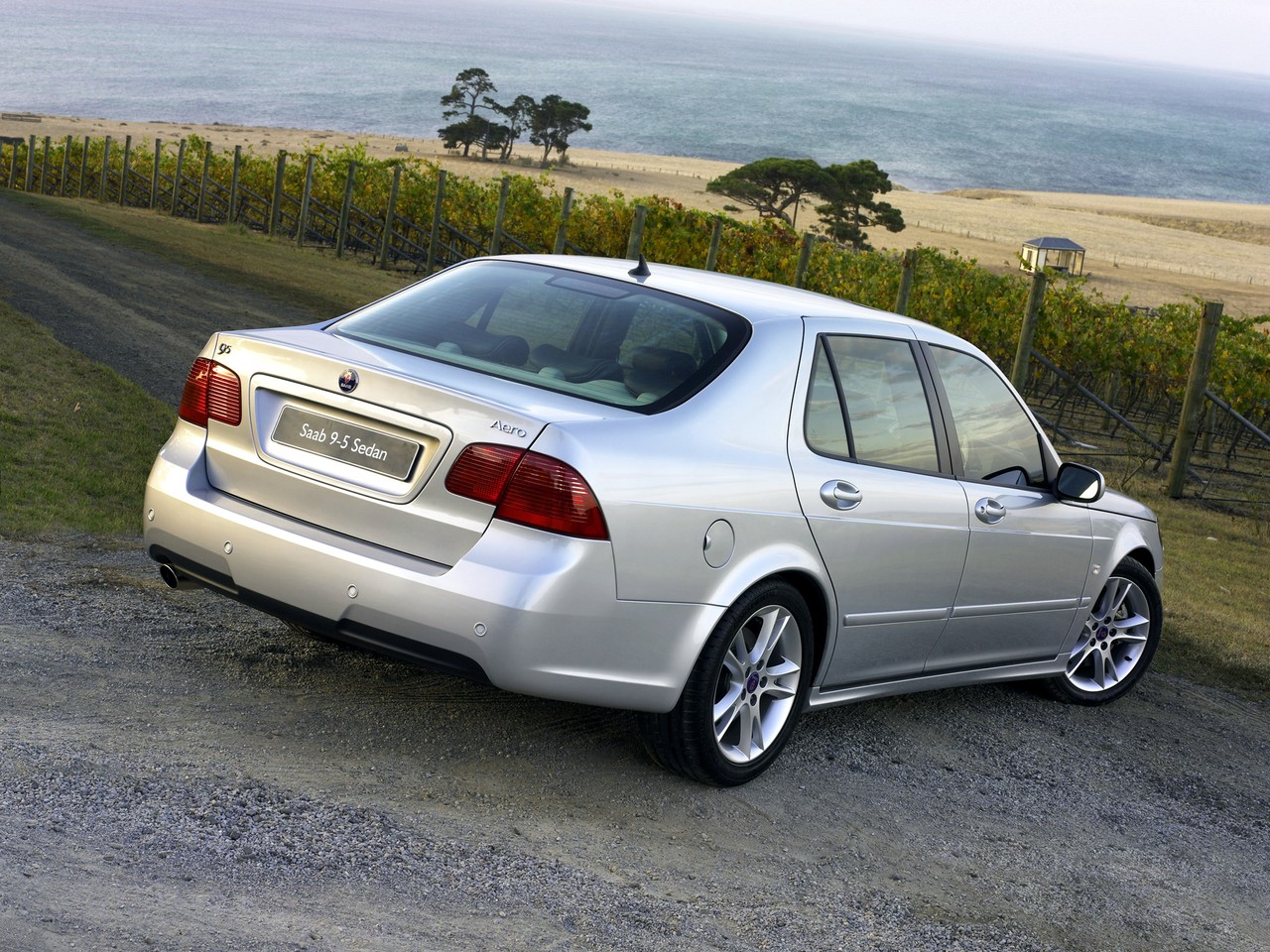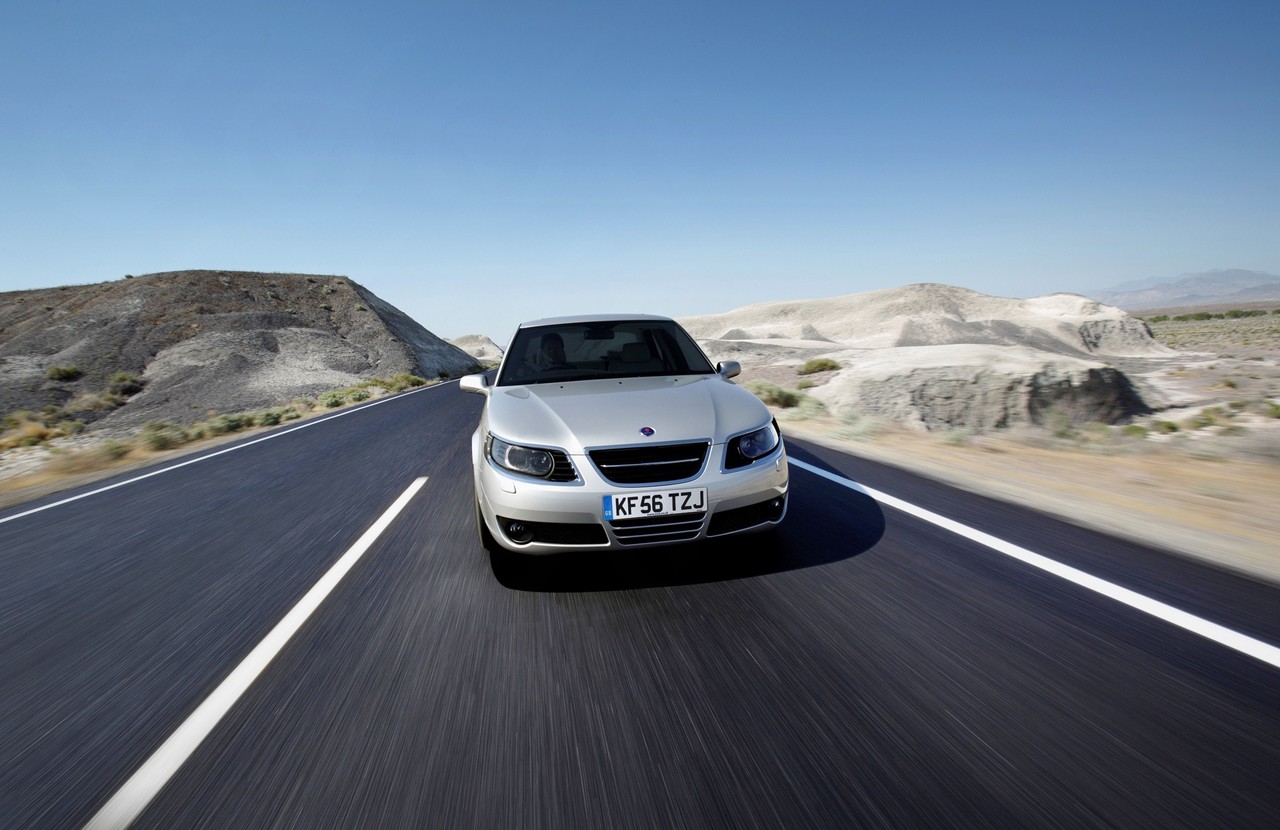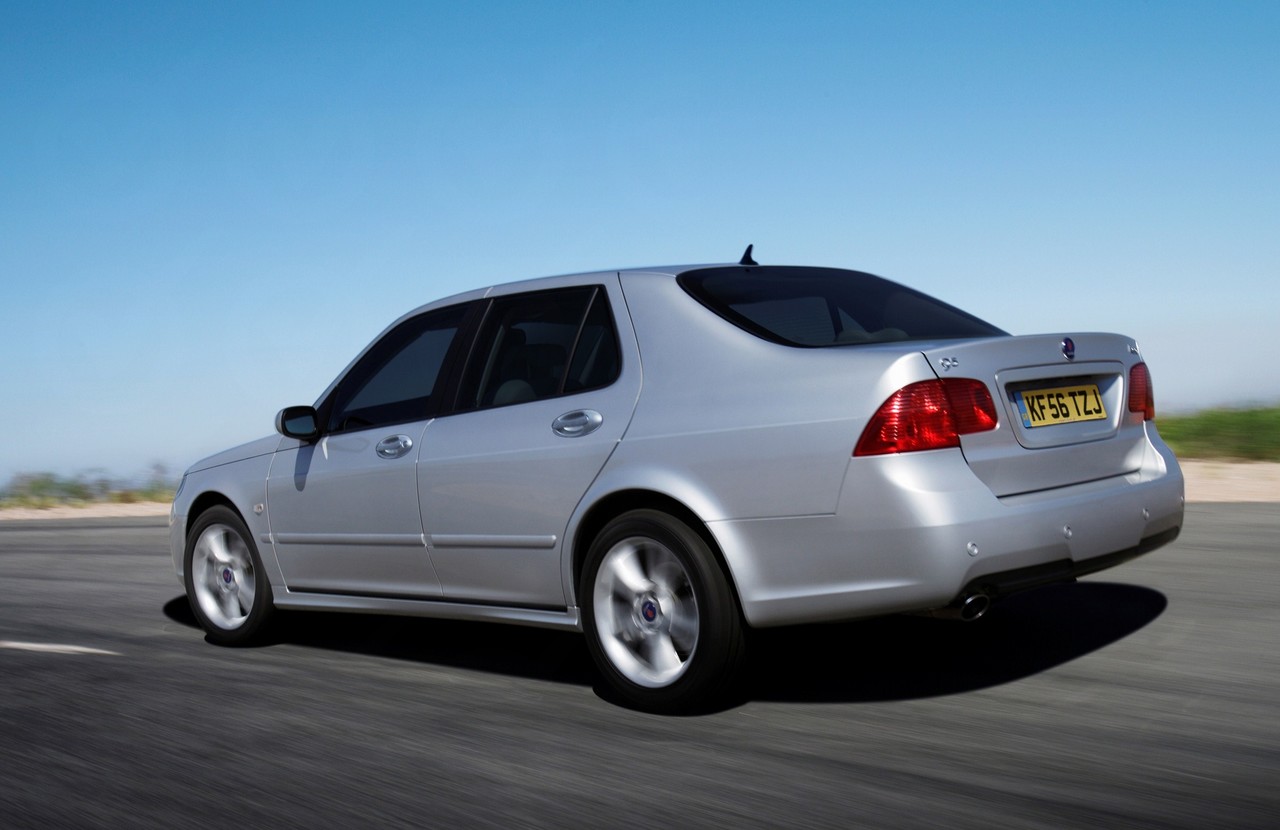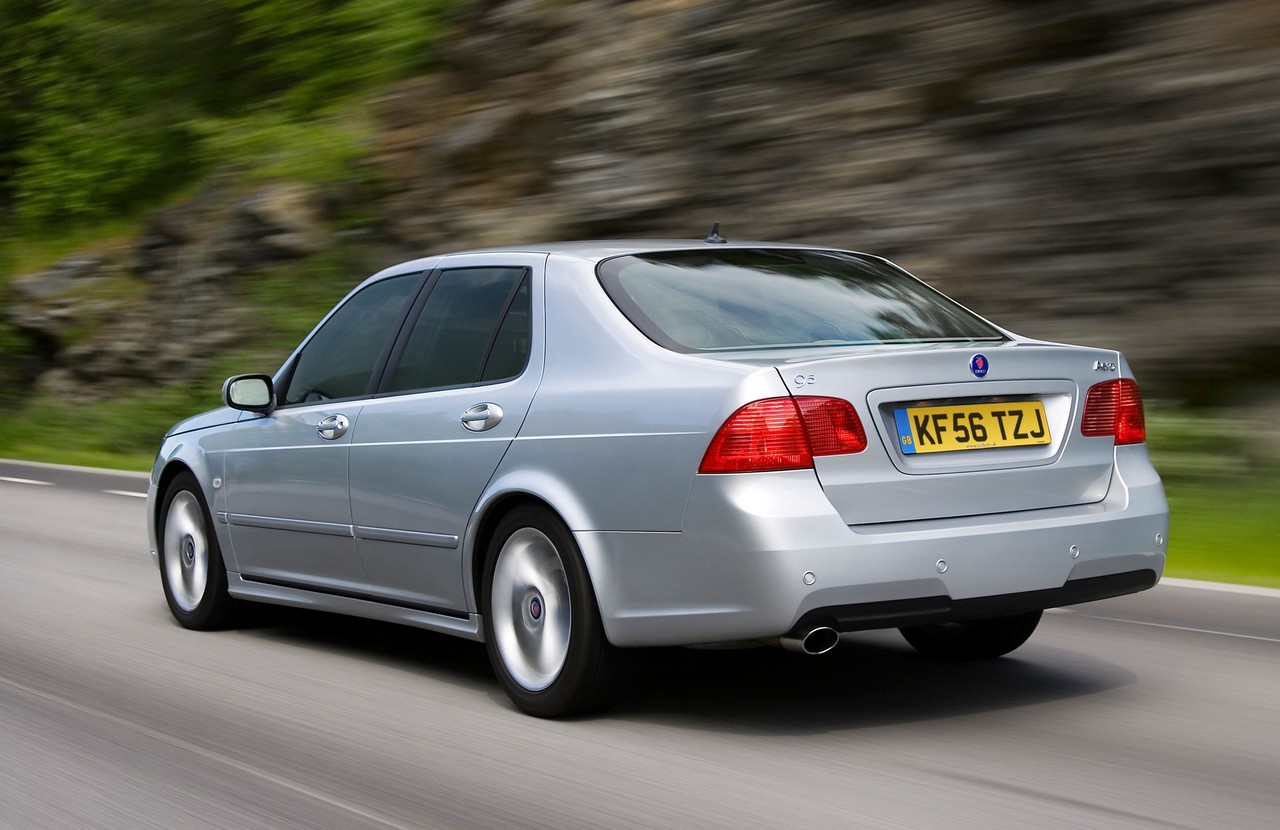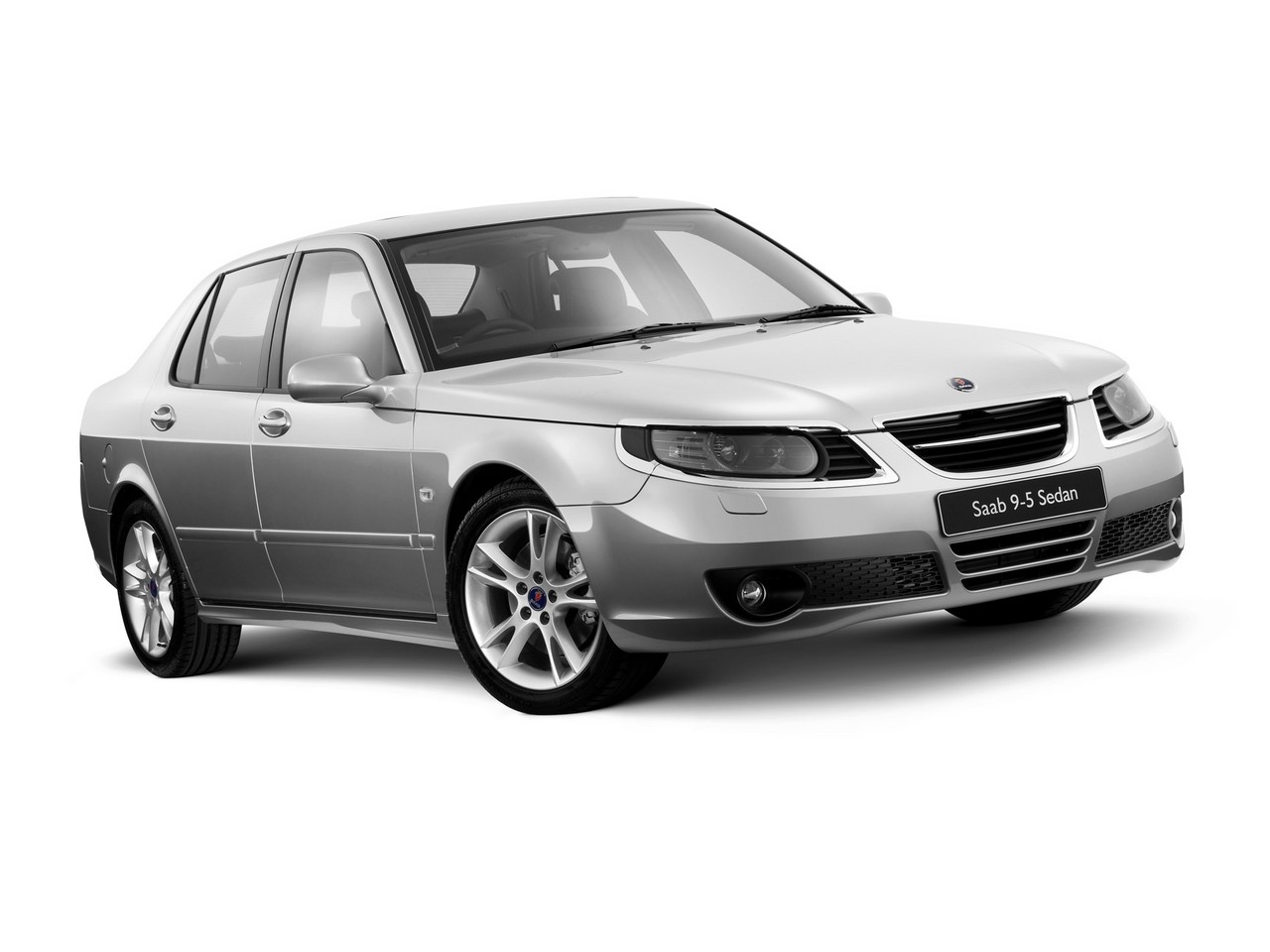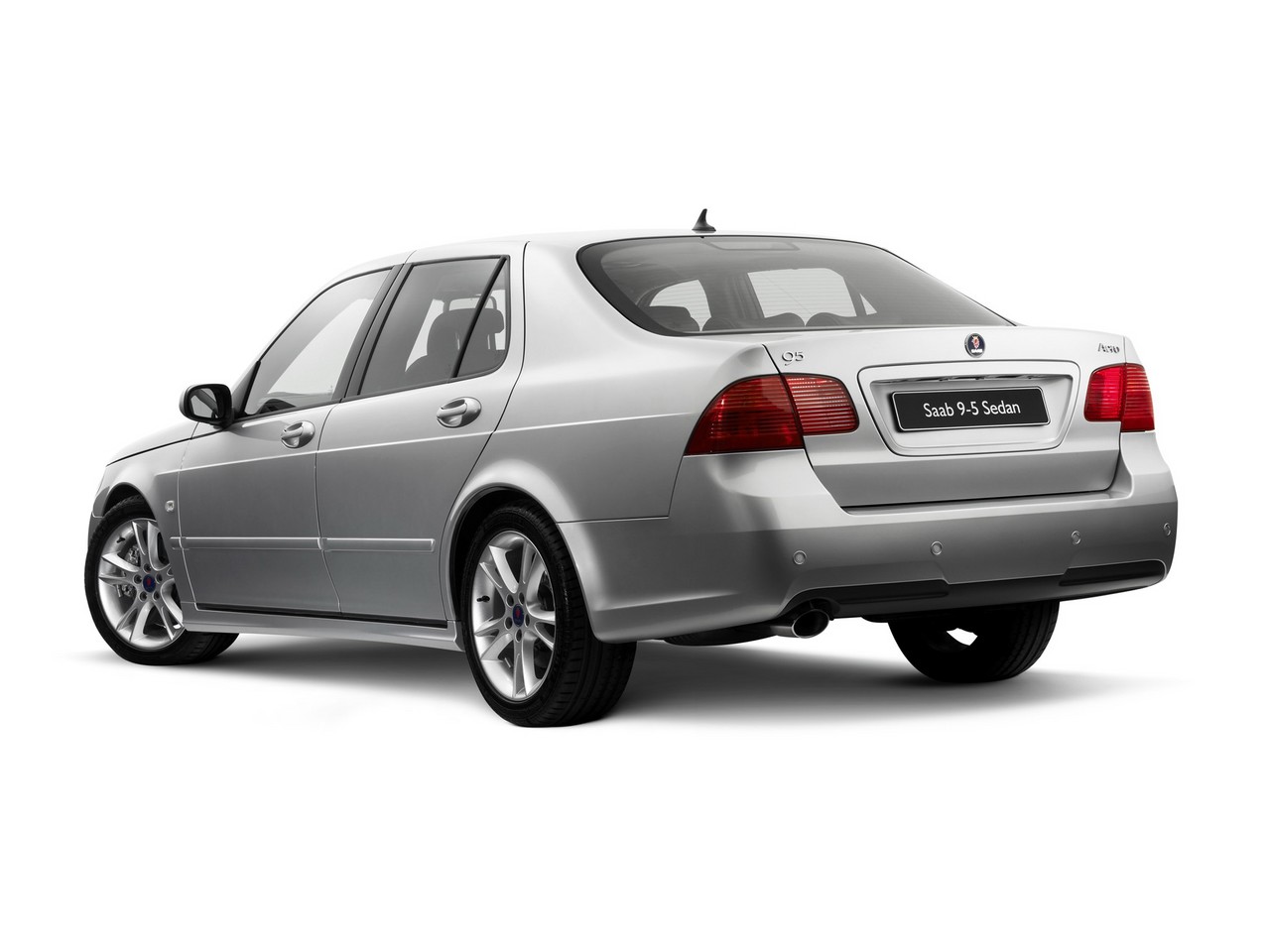
- Flexible low-pressure turbocharged petrol engines
- Comfortable ride
- Comfortable and spacious interior
- Accurate steering
- 2.0-litre turbo petrol engine is noisy at low engine speeds
- Dynamics fall short of class leaders
- Awkward controls for trip computer
- Temporary spare wheel
Review: Saab Mk.1-I 9-5 sedan (1997-01)
Overview
Released in November 1997, the Saab Mk.1 Series I (Mk.1-I) 9-5 was available as an executive sedan or Estate wagon (reviewed separately). Manufactured in Trollhattan, Sweden, the front-wheel drive 9-5 sedan range initially consisted of the 2.3t variant, but was expanded in 1999 with the 2.0t and Griffin. In 2000, the performance-oriented Aero was introduced.
Engines
Of the engines,
- The 2.0-litre B205 and 2.3-litre B235 engines had cast iron blocks, aluminium cylinder heads, double overhead camshafts and four valves per cylinder.
- For the 2.0t variants, the B205E engine had a Garrett GT17 turbocharger which provided maximum boost pressure of 0.40 bar (5.8 psi) and a compression ratio of 9.3:1;
- For the 2.3t variants, the B235E had a Garrett GT17 turbocharger but with maximum boost pressure of 0.55 bar (8.0 psi) and a compression ratio of 9.5:1; and,
- For the Aero variants, the B235R engine had a Mitsubishi TD04 turbocharger which provided maximum boost pressure of and a compression ratio of 9.3:1.
- The 3.0-litre L81/B308 V6 turbocharged petrol engine had a cast iron block, aluminium cylinder heads, double overhead camshafts, four valves per cylinder and a compression ratio of 9.5:1. The engine was fitted with a Garrett GT15 turbocharger which used the exhaust gases from one cylinder bank and provided boost pressure of 3.6 psi (0.25 bar).
Dimensions and suspension
Compared to the Saab 9000 which it replaced, the 9-5 was 44 mm longer (at 4805 mm), 14 mm wider (1792 mm), 29 mm taller (1449 mm) and had a 31 mm longer wheelbase (2703 mm). Furthermore, the Saab 9-5 had MacPherson strut front suspension and independent, multi-link rear suspension.
| Variant | Editions | Year | Engine | Trans. | Peak power | Peak torque |
|---|---|---|---|---|---|---|
| 2.3t | N/A | 1998-99 | 2.3-litre turbo petrol I4 | 4sp auto, 5sp man. |
125 kW at 5500 rpm (136 kW for 2001) |
280 Nm at 1800-3500 rpm |
| S | 1997-01 | |||||
| SE | 1999-01 | |||||
| 2.0t | N/A | 1999-01 | 2.0-litre petrol turbo I4 | 4sp auto, 5sp man. |
110 kW at 5500 rpm | 240 Nm at 1800-3500 rpm |
| Aero | N/A | 2000-01 | 2.3-litre turbo petrol I4 | 4sp auto | 169 kW at 5500 rpm | 330 Nm at 1900 rpm |
| 5sp man. | 169 kW at 5500 rpm | 350 Nm at 1900 rpm | ||||
| Griffin | N/A | 1999-01 | 3.0-litre turbo petrol V6 | 4sp auto | 147 kW at 5000 rpm | 310 Nm at 2500-4000 rpm |
Safety equipment
Standard safety equipment for the Saab 9-5 included dual front airbags, front seat-mounted side thorax airbags with an upper chamber for head protection, ABS, electronic brake force distribution, active front seat head restraintsand front seatbelts with pretensioners and load limiters; the Aero and Griffin variants were also equipped with traction control.
Euro NCAP crash testing
In Euro NCAP crash testing , a 1998 Saab 9-5 sedan – with a 2.0-litre petrol engine – received a four star adult occupant protection rating with a score of 30.57. In the frontal offset impact test, there was a slight risk of serious chest injury for the front occupants and leg protection was marginal for the driver. In the side and pole impact tests, maximum points were awarded and the thorax/head airbag cushioned the driver’s head.
In 2003, the 9-5 sedan was awarded a five star adult occupant protection rating following the introduction of intelligent seatbelt reminders for the front occupants that added a further two points for a total of 32.57; 32.50 points was the threshold for a five star rating.
Features
Standard features for the 9-5 2.0t and 2.3t included a seven speaker sound system with CD player, dual-zone climate control air conditioning, cruise control, heated front seats, steering wheel audio controls, split and folding rear seats, remote central locking, power windows and mirrors, tinted windows, an alarm and immobiliser. The 9-5 2.3t S was further equipped with 16-inch alloy wheels, while the SE added a nine speaker sound system, leather seats and power adjustable front seats with three memory settings.
Beyond this, the 9-5 Griffin added 16-inch alloy wheels, a nine speaker Harman Kardon sound system with a six-stack CD player, ventilated front seats, heated rear seats, a power-operated sunroof, refrigerated glove box, trip computer and woodgrain interior trim. From October 2000, the Griffin as fitted with 17-inch alloy wheels and a woodgrain gear selector; three years of scheduled servicing costs was also included in the retail price.
9-5 Aero
Compared to the 2.3t SE, the Aero was equipped with 17-inch alloy wheels with sports suspension (10 mm lower ride height, firmer springs, dampers, anti-roll bars and bushes), a power-operated sunroof and sports body kit with a lower front spoiler, side skirts, extended rear bumper. For Aero variants with a manual transmission, an ‘overboost’ function increased peak torque from 350 Nm to 370 Nm for up to twenty seconds.
February 2001: 9-5 update
In February 2001, the 9-5 was updated and standard features were extended to include leather seats, a leather-wrapped steering wheel, trip computer and new key with boot release, alarm and deadlock functions. Furthermore, the 2.3t S was fitted with 15-inch alloy wheels, while the Aero and Griffin variants received rear parking sensors. Inside, the 2.3t (S and SE editions) and Griffin were fitted with a boost gauge. Visually, the 2001 models could be identified by their clear side indicator lenses and new Saab badges.
Review: Saab Mk.1-II 9-5 sedan (2001-06)
Overview
Released in November 2001, the Mk.1 Series II (Mk.1-II) 9-5 sedan introduced a revised range, five-speed automatic transmissions and a more powerful Aero edition (due to revised engine management and an increase in boost pressure). Although the Griffin was discontinued, the range was expanded as the 2.0t, 2.3t and 2.3T variants were available in Linear, Vector and Arc editions. The newly introduced 2.3T variants were powered by Saab’s B235L engine which had similar properties to the other B235 engines and was fitted with a Garrett T25 turbocharger.
The Mk.1-II 9-5 also provided more dynamic handling as it was fitted with stiffer springs, thicker anti-roll bars, firmer dampers, a stiffer front subframe and bushes for the rear trailing arms, and new Michelin tyres. Visually, the Mk.1-II 9-5 could be identified by its new grille, bumpers, head- and tail-lights.
| Variant | Editions | Year | Engine | Trans. | Peak power | Peak torque |
|---|---|---|---|---|---|---|
| 2.0t | Linear | 2001-02 | 2.0-litre petrol turbo I4 | 5sp auto, 5sp man. |
110 kW at 5500 rpm | 240 Nm at 1800-3500 rpm |
| 2.3t | Linear | 2001-06 | 2.3-litre turbo petrol I4 | 5sp auto, 5sp man. |
136 kW at 5500 rpm | 280 Nm at 1800-3500 rpm |
| Vector, Arc |
2001-03 | |||||
| 2.3T | Arc | 2004-06 | 2.3-litre turbo petrol I4 | 5sp auto | 162 kW at 5500 rpm | 310 Nm at 1900-4500 rpm |
| Aero | N/A | 2001-02 | 2.3-litre turbo petrol I4 | 5sp auto, 5sp man. |
184 kW at 5300 rpm | 350 Nm at 1900-4000 rpm |
| 2003-06 | 2.3-litre turbo petrol I4 | 5sp auto |
Safety equipment
Compared to its Mk.1-I predecessor, the standard safety equipment for the Mk.1-II 9-5 included adaptive front airbags, a passenger-sensing system, upgraded seatbelts, improved knee protection and child-seat mounting points; the Aero was also fitted with electronic stability control.
From October 2002, electronic stability control, cornering brake control and traction control were standard across the range. Following the introduction of a new seat-belt reminder system, the 2004 Saab 9-5 sedan achieved a five star adult occupant protection rating with a score of 32.56 out of 37.
Features
Standard features for the 9-5 2.0t Linear included 15-inch steel wheels, a seven speaker sound system with CD player, dual zone climate control air conditioning, leather seats, heated front seats, cruise control, front fog lamps, rain-sensing wipers, a refrigerated glove box, a leather-wrapped steering wheel with audio controls, split and folding rear seats, remote central locking, power mirrors and windows, a height and reach adjustable steering wheel, trip computer and an immobiliser.
The 9-5 2.3t Linear was further equipped with 16-inch alloy wheels, while the Arc added a nine speaker Harman Kardon sound system, power adjustable front seats and ventilated with memory settings, rear parking sensors, a power-operated sunroof and light walnut woodgrain trim.
Compared to the Arc, the Vector was fitted with 17-inch alloy wheels with sports suspension, contoured sports seats, sports steering wheel, metallic-finish dashboard and bodykit, but omitted the Arc’s power adjustable and ventilated front seats, rear parking sensors and sunroof.
The Aero was distinguished by its six-disc CD player, power adjustable front seats (with memory settings), a power-operated glass sunroof; manual models continued to have an ‘overboost’ function.
October 2002: 9-5 update
The 9-5 sedan was updated in October 2002. As part of the update,
- All automatic models were fitted with steering-wheel gearshift buttons and auto-dimming rear view mirrors;
- The Vector received power adjustable front seats, rear parking sensors and a power-operated sunroof;
- The Vector and Aero were fitted with bi-xenon headlights; and,
- The Aero received ventilated front seats, power retracting mirrors and auto-dimming door mirrors.
Inside, the 9-5 could also be optioned with a ‘dark grey walnut veneer’ dashboard finish.
February 2004: 9-5 update
In February 2004, the 9-5 range was updated and the Arc was repositioned as it was fitted with a more powerful 2.3-litre B235L engine which was fitted with a Mitsubishi TD04 turbocharger. Inside, the charcoal leather upholstery was replaced by a lighter ‘Granite Grey’ shade, the dashboard and centre console were finished in black and the Linear and Arc editions had woodgrain interior trim. The Aero received styling enhancements for Aero with five-spoke 17-inch alloy wheels, revised bumpers, a matt black grille insert and ‘jewel effect’ front fog lamps. Inside, the Aero’s leather upholstery had a two-tone effect Granite Grey was combined with Obsidian Black and the dashboard featured carbon-fibre trim.
Review: Saab Mk.1-III 9-5 sedan (2006-09)
Overview
Released in May 2006, the Saab Mk.1 Series III (Mk.1-III) 9-5 sedan introduced a revised line-up and an extensive facelift. Visually, the Mk.1-III 9-5 could be identified by its new grille, headlamp and indicator units framed in chrome, integrated front bumper, re-profiled boot, slimmer side mouldings and door handles and new tail-light clusters with all-red lenses. Inside, there were new seats, white-on-black dials and separate control panels for the infotainment and climate control systems.
The handling was also improved as the front sub-frame was extended and strengthened, the MacPherson front suspension was decoupled to separate spring and damper load paths, the 21 mm anti-roll bar from the Mk.1-II Aero was applied throughout the range and the rear track was widened. As a result, the front assembly was 40 per cent more rigid than its predecessor.
October 2007: 9-5 update and Z19DT engine
In October 2007, the range was revised due to the introduction of Saab’s B235L ‘BioPower’ engine which was capable of running on E85 ethanol-blended fuel. Furthermore, the 2.3T Vector was discontinued and a 1.9-litre turbo-diesel engine (‘1.9TiD’) was introduced. The 1.9-litre Z19DT turbo-diesel engine had a cast iron block, aluminium alloy cylinder head, common-rail direct injection, a variable geometry turbocharger, double overhead camshafts, four valves per cylinder, exhaust gas recirculation and a compression ratio of 17.5:1.
| Variant | Editions | Year | Engine | Trans. | Peak power | Peak torque |
|---|---|---|---|---|---|---|
| 2.3t | Linear | 2006-07 | 2.3-litre turbo petrol I4 | 5sp auto, 5sp man. |
136 kW at 5500 rpm | 280 Nm at 1800-3500 rpm |
| 2.3t BioPower | Linear | 2007-09 | 2.3-litre turbo petrol I4 | 5sp auto | 154 kW at 5500 rpm | 310 Nm at 1800-4300 rpm |
| 2.3T | Vector | 2006-07 | 2.3-litre turbo petrol I4 | 5sp auto, 5sp man. |
162 kW at 5500 rpm | 310 Nm at 1900-4500 rpm |
| 1.9TiD | Linear | 2007-09 | 1.9-litre turbo-diesel I4 | 5sp auto | 110 kW at 4000 rpm | 320 Nm at 2000-2750 rpm |
| Aero | N/A | 2006-09 | 2.3-litre turbo petrol I4 | 5sp auto | 191 kW at 5200 rpm | 350 Nm at 1800-5200 rpm |
| 2006-08 | 2.3-litre turbo petrol I4 | 5sp man. | 191 kW at 5200 rpm | 370 Nm at 1800-5200 rpm (overboost) |
Features
Compared to its Mk.1-II predecessor, the Mk.1-III 9-5 Linear was similarly equipped, but added rear fog lights, ambient lighting and mobile phone preparation. The Vector was further equipped with 17-inch alloy wheels, power adjustable front seats with memory settings, front fog lights, rear parking sensors and ‘Tektite’ dashboard and door trim.
The 9-5 Aero was distinguished by its wider 17- by 7.5-inch tyres with sports suspension, nine speaker sound system with six-disc CD player, bi-xenon headlights with washers, power-operated sunroof, motion-sensing alarm and two-tone leather upholstery.
Related links
